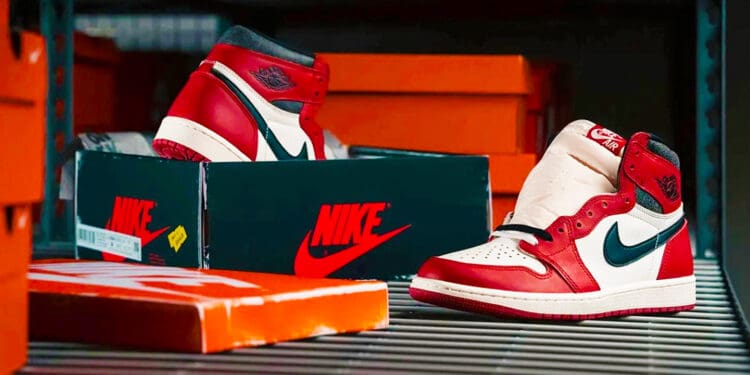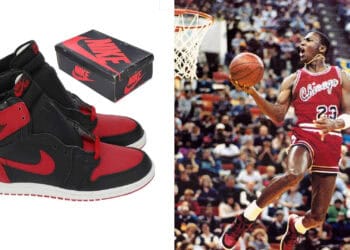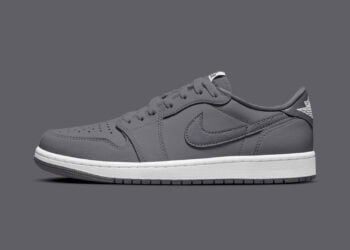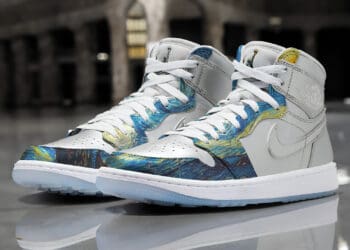Let’s take you back in time. The year was 1984. Michael Jordan, a young, talented, but relatively unknown basketball player from the University of North Carolina, was about to embark on a journey that would change his life and the sneaker industry forever. He wasn’t aware that the release of a single pair of shoes would change his life irreversibly, forever, but create a cultural phenomenon that would stand the test of time. Whether you’re a newbie or consider yourself a true sneakerhead, welcome to Sneaker Fortress’s fascinating, feel-good foray into the world of Air Jordans and explore how this iconic brand came to be. While we’re at it, we’ll pay homage to those who have worked to ensure that the collection endures in popular culture, even to this day.
When Michael Jordan signed with Nike in 1984, it was a crucial turning point in the sneaker game. Mind you, he was a rookie, and in all fairness, there were no real guarantees about how his career would go, yet he was able to ink a deal with the Swoosh for a reported $2.5 million over five years, plus royalties. Considering he wasn’t even the No. 1 pick, those were big numbers, and Nike was betting a lot for this to work.
Nike was a renowned brand, no doubt, but they needed something ground-breaking and special to compete with the established giants of the time. We’re talking here specifically about Converse et al. Enter the Air Jordan I, the first sneaker in the Air Jordan line. The shoe was like nothing the world had seen before—a sleek and stylish design that exuded the spirit of the dynamic, young basketball prodigy himself.
The Air Jordan I was an instant hit, but it wasn’t just its stunning looks that captivated fans. Michael Jordan’s undeniable charisma and unmatched skills on the court turned the shoes into a symbol of excellence. With each gravity-defying dunk, fans witnessed history in the making, and the Air Jordans became a tangible link to that greatness. Suddenly, everyone wanted to “Be Like Mike,” and wearing a pair of Air Jordans became the closest thing to being part of Jordan’s inner circle (wouldn’t that be lovely?).
The Nike Air Jordan line evolved as the years went by, introducing new designs, innovative technologies, and captivating colourways. Each release was met with frenzy and excitement. Collectors would camp outside stores for days, hoping to grab a coveted pair for their stashes (violently, if necessary), while others would trade, buy, and sell Air Jordans like precious artefacts. The brand had transcended mere sneakers, becoming a culture unto itself.
Air Jordans made their way into popular culture on basketball courts and on the feet of celebrities, musicians, and fashion-forward individuals. As you’ll find out, as we go on this epic journey together, even hip-hop artists embraced the brand, incorporating Air Jordan shoes into their music videos and lyrics, further elevating their status. From the legendary rap duo Run-DMC to contemporary artists like Travis Scott and Drake (Sad or Happy), Air Jordan sneakers have become a staple in fashion and streetwear.
The Air Jordan Brand extends beyond the realm of fashion. It has inspired countless young athletes to pursue their dreams, believe in themselves, and strive for greatness. You’ll read about some of them in this article. The Jumpman logo has become an emblem of ambition, resilience, and a reminder that hard work and dedication can make anything possible.
What sets Air Jordans apart is not just their design or the name behind them. It’s the culture they’ve created – the sense of belonging, the feeling of being part of a larger and more significant narrative. The nostalgia they evoke takes us back to the moments when we first saw Michael Jordan “fly” or laced up our first pair of Air Jordans, feeling like we could conquer the world. Amazingly, the brand has allowed even casual or non-basketball fans to feel that way. That makes Jordans iconic – it’s that feeling, and we’re all invited to feel it.
So, let’s dive deep, or maybe more appropriately, fly high, and check out the collection shoe by shoe, year by year, and take a moment to appreciate the history, passion, and impact this brand has had. We can’t say this enough – Air Jordans are more than shoes; they are a testament to the power of dreams and the lasting legacy of a basketball legend. Let’s go!
RELATED: See an artist’s interpretation of what the Adidas Jordan sneaker could have looked like
Air Jordan 1
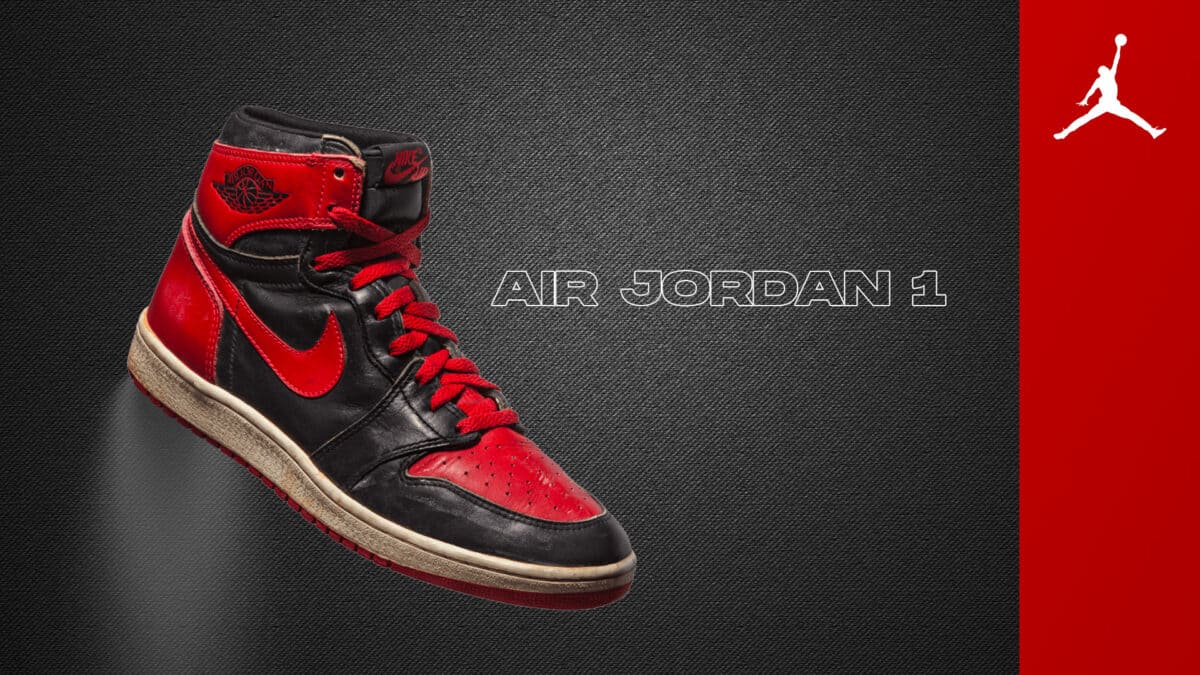
The Air Jordan I burst onto the scene like a sneaker superhero, ready to save the world from dull footwear. If you’ve watched the movie Air, you’ll have a sense of who and what was defied in the story of the Air Jordan I’s creation story.
In the 80s, Michael Jordan, a basketball prodigy with oodles of charm, was on the brink of stardom. Nike, the sneaker giant, saw the potential in this young athlete and decided to join forces. They knew they had to create something that would move the needle and make people gasp and say, “Yes! I want those!”.
Introducing Peter Moore, the creative mastermind behind the Air Jordan I. He took inspiration from the rebellious spirit of Michael Jordan, a man poised to do great things on the court. Moore wanted to design a shoe that matched Jordan’s fearless style, boldness, and infectious charisma. Pen in hand, Moore sketched a sleek and stylish silhouette with just the right amount of flair and that elusive “je ne sais quoi”. The Air Jordan I was born. It was a high-top wonder that fused premium leather, vibrant colours, and the iconic Nike Swoosh. It was a sneaker revolution in the making.
But the journey didn’t end with a brilliant design. Michael Jordan took the court wearing the Air Jordan I, and the world gasped in awe. He soared through the air, defying gravity (and the NBA), and made slam dunks look like child’s play. Suddenly, the Air Jordan I became more than just a shoe but also a symbol of excellence, a ticket to greatness.
The Air Jordan I’s influence didn’t stop there. It invaded popular culture, with musicians rocking the iconic high-tops on stage and celebrities strutting down red carpets in them, proving that sneakers could be both stylish and sophisticated. So influential were the Air Jordan Is that famed director Spike Lee featured them prominently in his 1986 film, She’s Gotta Have It. Lee, both the director and a style icon in his own right, made a bold fashion statement by sporting the Air Jordan Is throughout the movie. With their sleek design and undeniable cool factor, the shoes perfectly complemented Lee’s on-screen persona as Mars Blackmon, a character that is iconic in its own right. Mars would later be featured in numerous ad campaigns and even on some Jordan shoes, namely the Spike and Mike spots.
Today, the Air Jordan I continues to be a hit. Its influence can be seen in the countless collaborations, limited editions, and re-releases that keep sneaker fans on their toes, ready to get their hands on the next drop. The shoe’s legacy lives on in the hearts of basketball lovers, fashion enthusiasts, and anyone who appreciates a touch of sneaker magic.
RELATED: Most Popular Air Jordan 1s Of All Time
Air Jordan 2
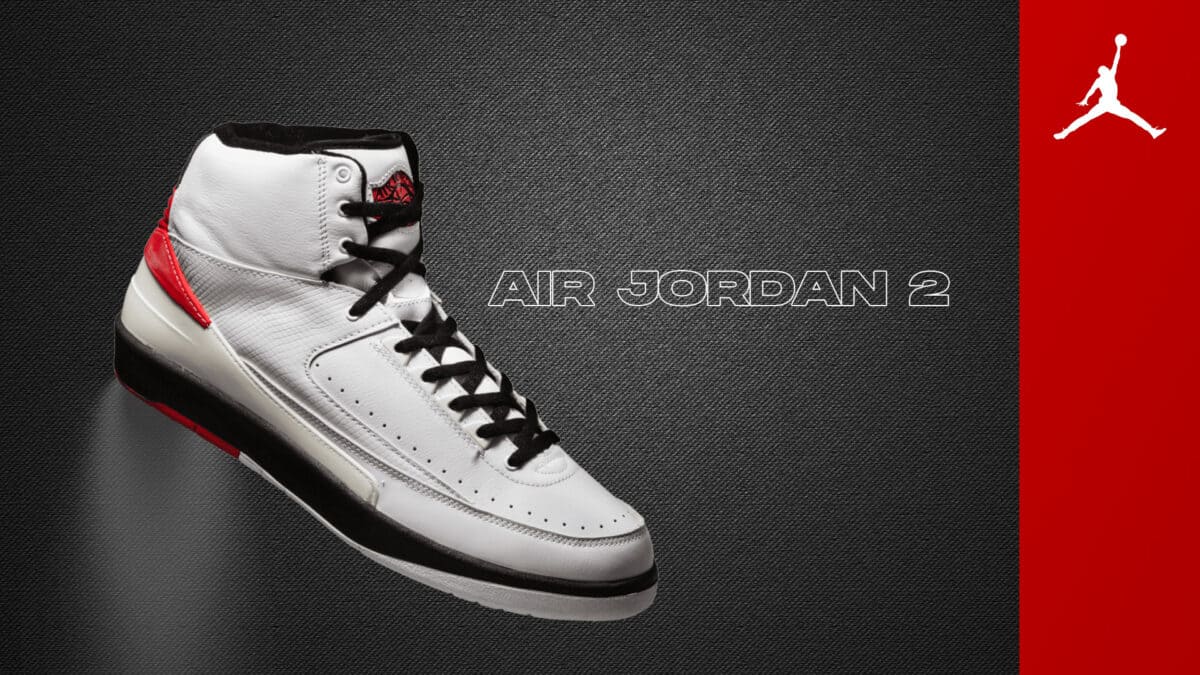
After the ground-breaking success of the Air Jordan I, it was time for the Air Jordan II to take centre stage and prove that lightning could strike twice. The design team at Nike knew they had to keep the momentum going. They wanted to create a shoe that retained the essence of the original Air Jordan while adding a touch of fresh flavour. To get the job done, they turned to the brilliant mind of Bruce Kilgore.
Kilgore, a sneaker genius with a knack for combining form and function, accepted the challenge and got to work. He was determined to create a shoe with sophistication and style while staying true to the Air Jordan legacy. His vision was to make the Air Jordan II a luxurious sneaker, a fusion of performance and high fashion that would make heads turn both on and off the court.
Kilgore and Peter Moore crafted a true masterpiece. The Air Jordan II made its grand entrance with a premium Italian leather upper, giving it an air of elegance and class. The shoe featured a sleek silhouette with a unique heel tab inspired by luxurious handbags. It was a bold departure from the Air Jordan I, yet it carried the same spirit of innovation and daring that had captured the hearts of enthusiasts everywhere.
The Air Jordan II wasn’t just about looks. It was also designed to perform on the court, so it introduced Nike’s innovative Air-Sole technology in the midsole, providing superior cushioning and support. This winning combination of style and substance set the Air Jordan II apart from the competition.
Sneakerheads broke out in a wild celebration when the Air Jordan II hit the shelves. They marvelled at the shoe’s refined design, attention to detail, and the luxurious materials that enveloped their feet. The Air Jordan II effortlessly picked up where its predecessor left off, continuing the legacy of boldness and individuality that had become synonymous with the Air Jordan brand. Despite being released over three decades ago, the Air Jordan II symbolises timeless style and elegance. Its influence can be seen in the countless iterations and collaborations that pay homage to its iconic design.
RELATED: The One Nike Air Jordan Sneaker Michael Jordan Hated
Air Jordan 3
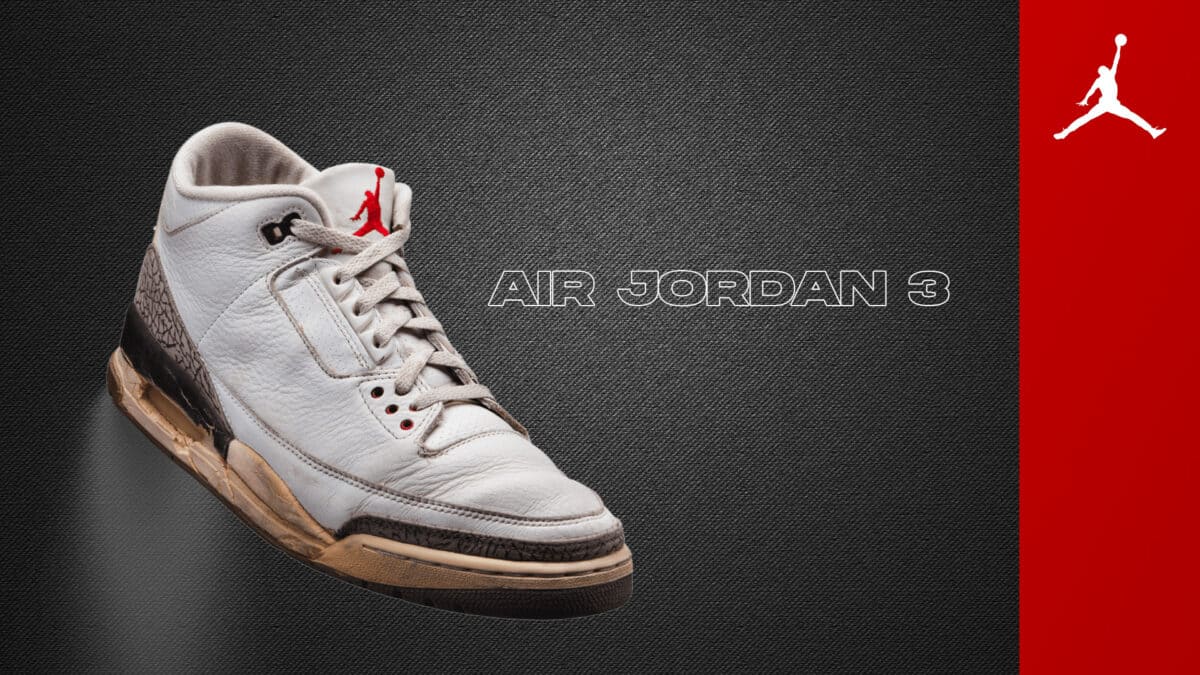
After the AJ II, Nike found itself at a crossroads. They needed a shoe that would capture hearts, so they needed to find the right designer to fulfil the assignment. Enter Tinker Hatfield, a design whizz known for his outside-the-box thinking and innovative creations. Nike assigned Hatfield the task of designing the Air Jordan III. It’s fair to say he knocked it out of the park!
Inspired by Michael Jordan’s love for luxury cars, Hatfield designed the Air Jordan III with sleek lines and smooth curves, just like the finest automobiles. He introduced the iconic elephant print, a design element that added a touch of wildness and energy to the shoe. And to top it all off, Hatfield added a visible Air unit to the heel for extra cushioning, making the Air Jordan III as stylish as possible.
During the 1988 NBA All-Star Weekend, the Air Jordan III became forever intertwined with the Jumpman logo and Michael Jordan’s legendary slam dunk contest win. Basketball fans can’t forget it – Jordan, flying through the air, soared from the free-throw line and delivered a jaw-dropping dunk that left the crowd in awe. It was an awe-inspiring moment that solidified Jordan’s status as a basketball legend and the Air Jordan III as a shoe for the ages.
Inspired by Jordan’s on-court feats, Nike commissioned Peter Moore to create a logo that would encapsulate the essence of MJ’s airtime prowess. And thus, the Jumpman logo was born – a silhouette of Michael Jordan mid-air, legs spread wide, ready to unleash a ferocious slam dunk. From that moment on, the Jumpman logo became the symbol of Michael Jordan’s unrivalled athleticism and the official mark of the Air Jordan line.
Against this background, the III, with its ground-breaking design and association with Jordan’s legendary dunk, quickly became a fan favourite. Even today, its influence can be seen in the countless tributes, re-releases, and collaborations that keep the shoe fresh and exciting for new generations.
RELATED: The 10 Rarest & Coolest Nike Air Jordan Sneakers
Air Jordan 4
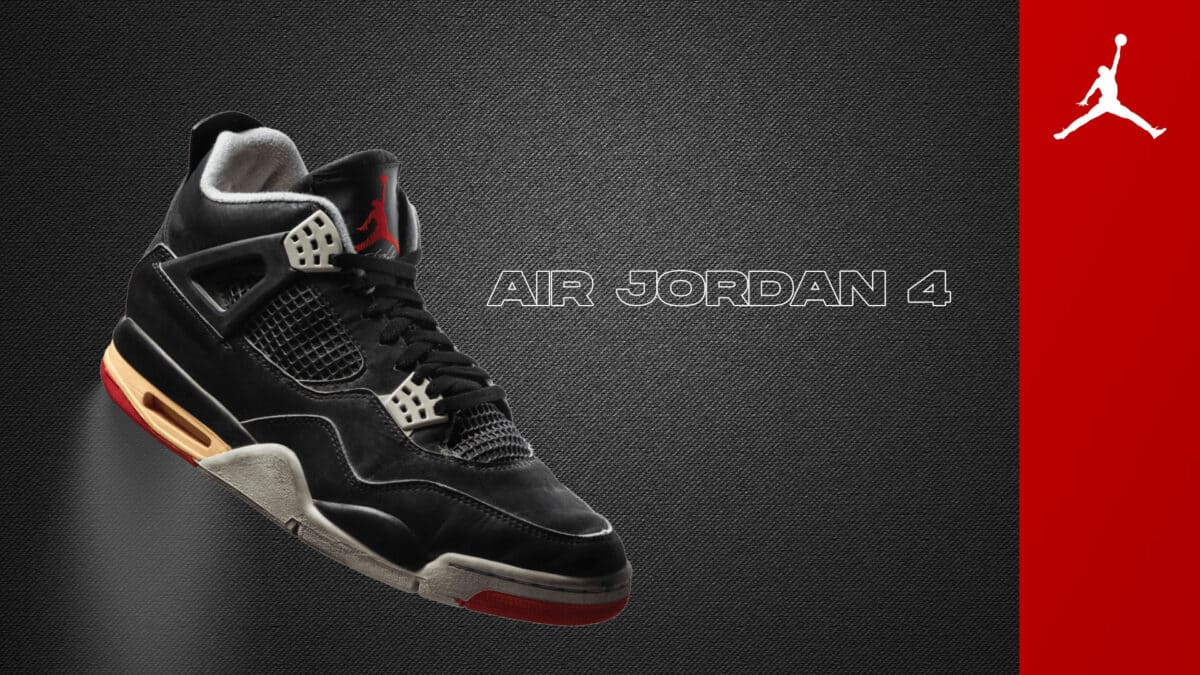
1989. Michael Jordan’s star was shining brighter than ever. With three Air Jordan models, Nike returned Tinker Hatfield, the design wizard behind the Air Jordan line. Hatfield took on the challenge of creating the Air Jordan IV, determined to deliver yet again.
Hatfield began crafting a shoe that seamlessly blended style, performance, and innovation. The Air Jordan IV emerged with a sleek and streamlined design that featured a unique lace lockdown system, allowing for a snug fit, and the iconic plastic wing eyelets added a touch of futuristic flair. The IV introduced Nike’s revolutionary “Air” cushioning system in both the heel and forefoot, providing unparalleled comfort and support. It was like walking on clouds while maintaining the agility of a hooper.
The Air Jordan IV made its way into global pop culture, cementing its place in the hearts of athletes, artists, musicians, and even filmmakers. In 1989, renowned filmmaker Spike Lee, a passionate basketball fan (Go Knicks!) and sneakerhead himself, featured the Air Jordan IV in his movie Do the Right Thing. Lee’s character, Mookie, famously portrayed by himself, rocked a pair of Air Jordan IVs throughout the film. This appearance elevated the shoe’s status to new heights and solidified its place as a cultural icon.
Not only did Spike Lee show the shoe love, but the Air Jordan IV became a staple in advertising and hip-hop music videos, with artists like Jay-Z, Nas, and Eminem flaunting their Air Jordan IVs in music videos, making it clear that these kicks were more than just footwear—they were about that street cred life too.
The Air Jordan IV’s legacy continues to shine brightly. From the classic “Bred” colourway to the vibrant “Fire Red,” the sneaker has a special place in the hearts of enthusiasts worldwide.
RELATED: The 12 Best Air Jordan IV Retro Sneakers of All Time
Air Jordan 5
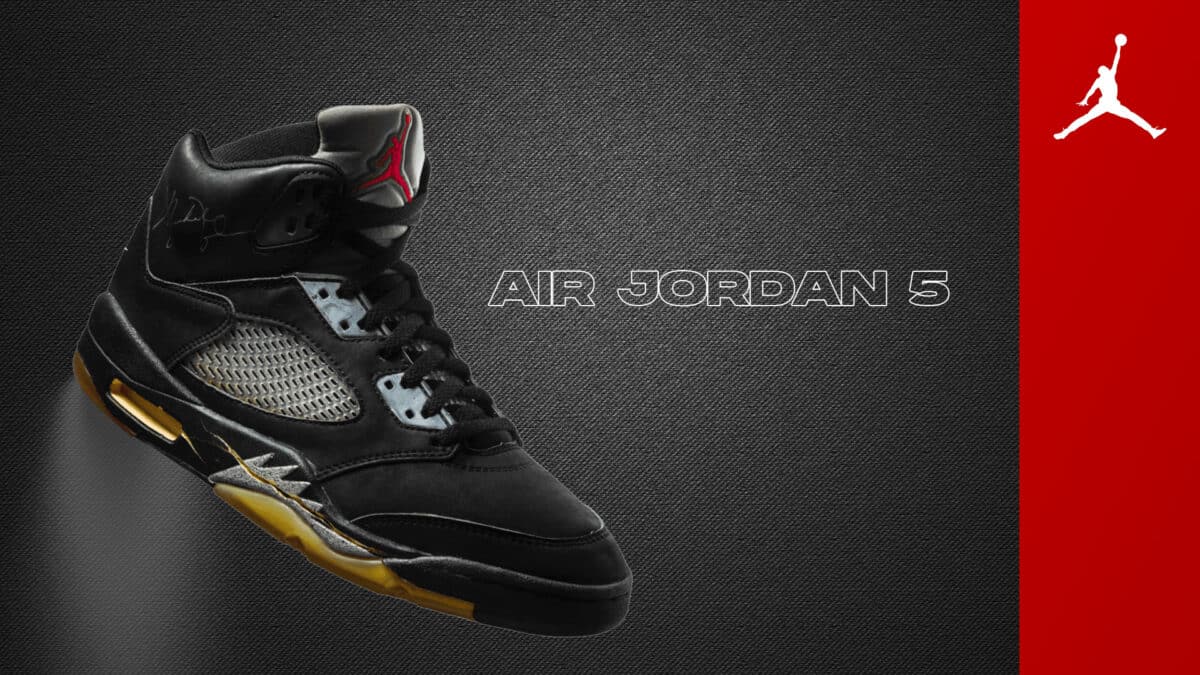
With the Air Jordan V, Tinker Hatfield aimed to create a shoe that reflected Michael Jordan’s dominance on the court and his penchant for pushing the boundaries. He drew inspiration from fighter jets and their sleek lines, infusing the V with high-flying power. The shoe featured a distinctive shark-tooth design on the midsole and a mesh panel on the side, adding both style and breathability. The shoe introduced several performance-enhancing features, including a visible Air unit in the heel for optimal cushioning and support, allowing players to soar to new heights and making every step feel like a breeze.
As the Air Jordan 5 made its way onto the feet of athletes and sneaker fans, it became a symbol of Michael Jordan’s unstoppable rise in the NBA. In the 1990-1991 season, Jordan put up huge numbers, setting personal scoring records – for example, his 69-point game against the Cleveland Cavs. The Air Jordan V was right there with him, witnessing history.
Air Jordan 6
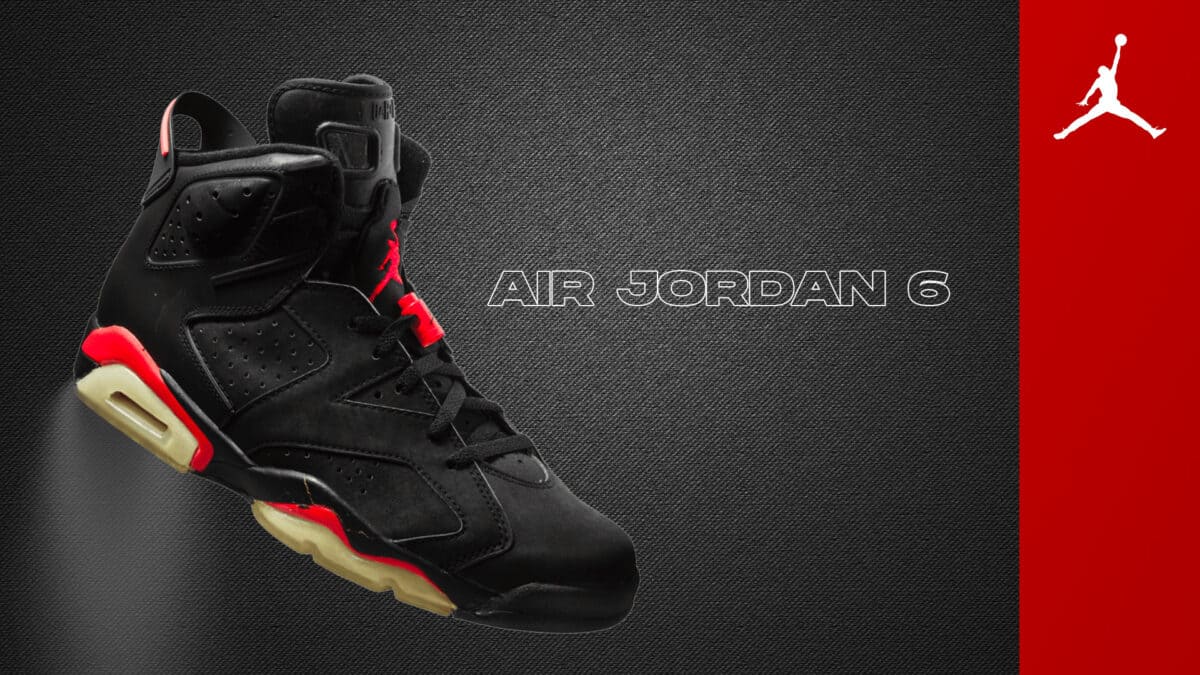
Drawing further inspiration from MJ’s sports car obsession, Tinker Hatfield worked with sleek lines and a bold aesthetic for the Air Jordan VI. The shoe featured a unique lace toggle system that provided a snug fit, while the perforated upper allowed for better breathability—because even the coolest ballers need fresh air.
The shoe used a reinforced toe cap for added protection and Nike’s innovative Air cushioning in the heel and forefoot for ultimate comfort.
Perhaps the most significant about the Air Jordan VI was that it was part of Michael Jordan’s triumphant journey to his first NBA championship. In the 1990-1991 season, Jordan’s Chicago Bulls dominated the league, and after many disappointing seasons, he led them to the promised land. With his Air Jordan VIs laced up, Jordan’s performances were unforgettable – from his gasp-inducing “Shoulder Shrug” game in the NBA Finals to his clutch performances throughout the playoffs, the Air Jordan VI took part in the magic.
RELATED: Wait, Batman Wore Air Jordan 6 Sneakers For Batman Returns?
Air Jordan 7
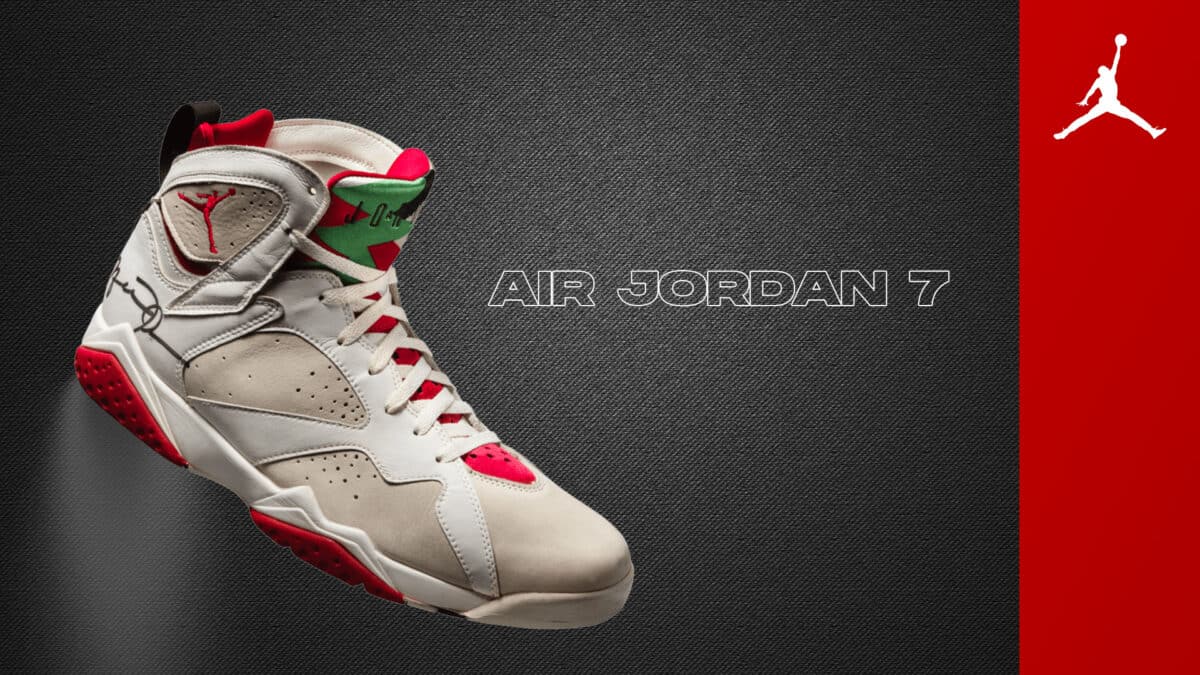
In case you haven’t noticed by now, designer, Tinker Hatfield, was on a roll. He aimed to capture Jordan’s electrifying presence on the court for the Air Jordan VII. He drew inspiration from African tribal art, infusing the shoe with intricate geometric patterns that gave it a bold and dynamic look. Hatfield crafted a sleek and streamlined silhouette with a neoprene bootie that provided a snug and comfortable fit – because a happy foot is a winning foot! Corny?
As Michael Jordan’s career reached new heights, so did the Air Jordan VII’s connection to his incredible achievements. In the 1991-1992 NBA season, Jordan led the Chicago Bulls to their second consecutive NBA championship, solidifying their status as an unstoppable force. With the Air Jordan 7 on his feet, Jordan’s performances were nothing short of mesmerising, leaving fans in awe as he outmanoeuvred opponents and delivered in clutch moments.
Outside of the US, the Air Jordan VII continued. It embarked on a journey to the global stage – the 1992 Summer Olympics in Barcelona, Spain. Representing Team USA, Michael Jordan and the “Dream Team” clinched the gold medal, showcasing their basketball supremacy. Who can forget it? And what was Jordan wearing during those legendary games? You guessed it—the Air Jordan VII. Its iconic presence on the Olympic stage cemented its place as a symbol of victory and triumph.
Today, the Air Jordan VII continues to captivate sneakerheads and athletes alike. Its unique design and rich history make it a cherished collector’s item. From classic colourways like the “Bordeaux” to special editions paying homage to Michael Jordan’s achievements, the Air Jordan VII keeps the spirit of victory alive.
Air Jordan 8
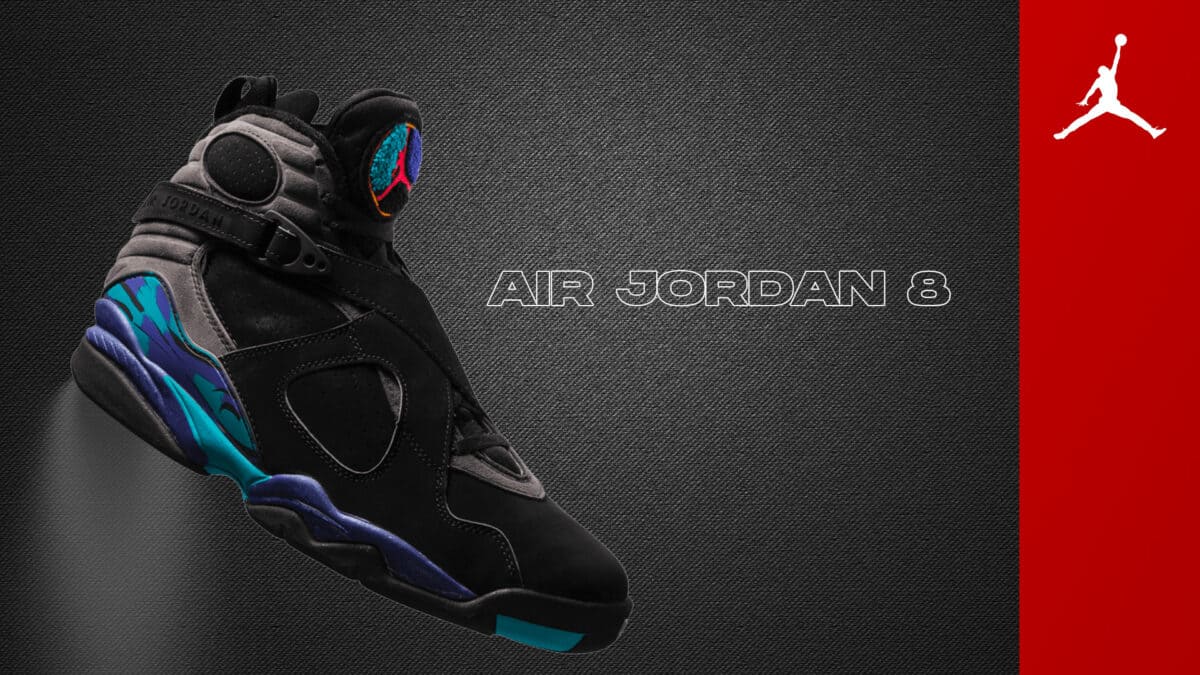
Further exploring MJ’s love for sports cars, Tinker Hatfield aimed to create a shoe that would reflect Michael Jordan’s tireless work ethic and his unwavering focus on winning. The shoe featured bold and crisscrossing straps that added support and a touch of style and flair. It was a design philosophy that perfectly mirrored Jordan’s dynamic and versatile playing style. The Air Jordan VIII wasn’t just about looks; it was engineered for performance. The shoe introduced a revolutionary technology called the “Air-Sole” unit, which provided exceptional cushioning and impact protection.
In the 1992-1993 NBA season, Jordan led the Chicago Bulls to their third consecutive NBA championship—a remarkable feat known as the “three-peat.” The Air Jordan VIII symbolised Jordan’s relentless pursuit of excellence, never-say-die attitude, and ability to lead his team to victory. It captured the essence of his basketball greatness and became a coveted symbol of success for sneakerheads and basketball enthusiasts worldwide.
Air Jordan 9
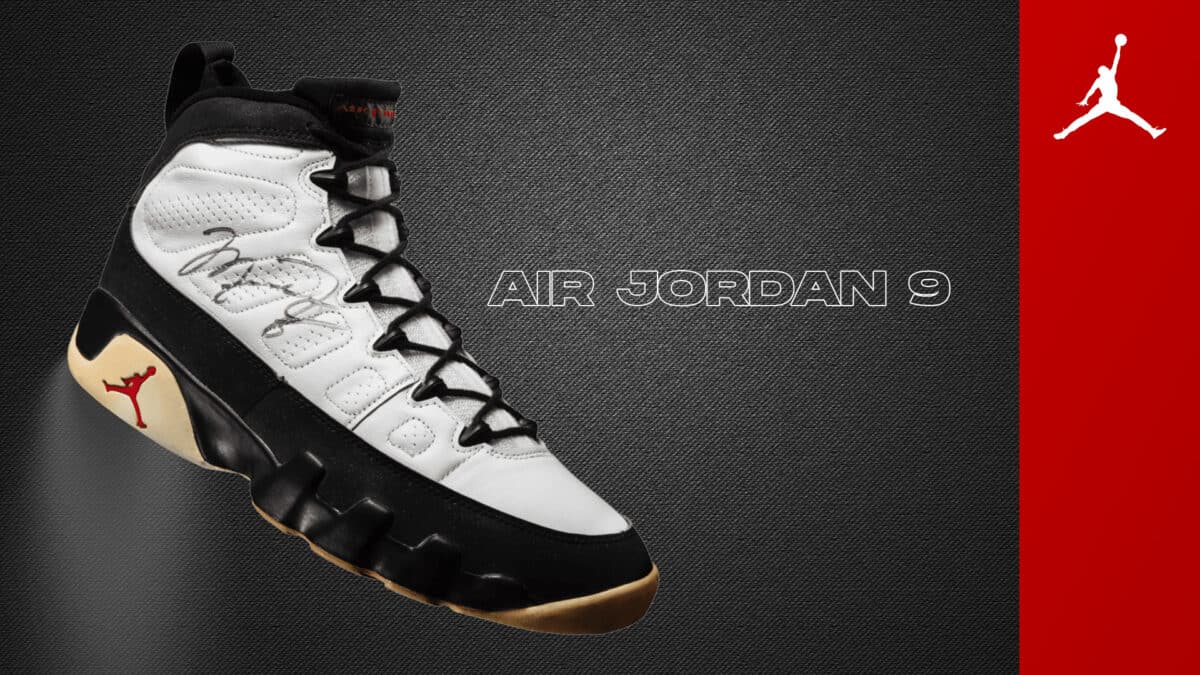
In 1993, Michael Jordan unexpectedly hung up his sneakers and retired from basketball. As Jordan stepped away from the game, Nike faced a unique challenge: creating a shoe honouring his illustrious career while setting the stage for a new chapter.
Tinker Hatfield wanted to pay homage to Jordan’s basketball journey while exploring new design elements. Since MJ wouldn’t be wearing the shoe on the court, Hatfield took the opportunity to experiment and create a shoe that would seamlessly blend style, comfort, and nostalgia. It was the first shoe in the line to be released after Jordan’s initial retirement, and it bore the weight of commemorating his incredible basketball legacy. Hatfield drew inspiration from global cultures, incorporating intricate patterns and details from different countries, such as the rising sun of Japan. The shoe embodied a sense of international flair, reflecting Jordan’s impact on the global basketball community. The shoe symbolised the end of an era, allowing fans to celebrate Jordan’s illustrious career while eagerly anticipating what lay ahead.
Although MJ wasn’t playing in the Air Jordan IX, Nike ensured that it still possessed exceptional performance features. The shoe boasted a lightweight and durable upper, providing stability and support for players on the court. The Air Jordan IX continued the tradition of blending fashion and function that had become synonymous with the brand.
Although Michael Jordan would eventually return to basketball and continue his extraordinary career, the Air Jordan IX will always be special in sneaker and basketball history. It marked a significant moment in Jordan’s life, signalling his temporary departure from the game that made him a legend.
RELATED: Jordan is About to Re-Release One of its Most Beautiful Sneakers of All-Time
Air Jordan 10
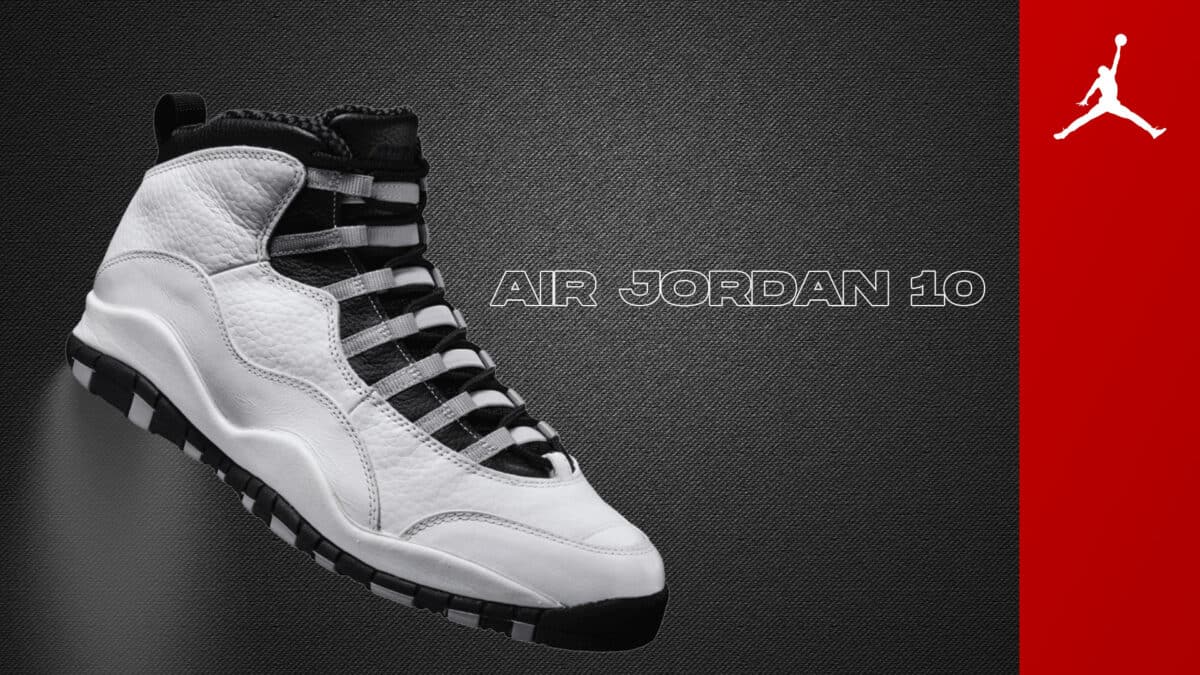
After a brief hiatus from the game he dominated, Michael Jordan made his highly anticipated comeback. And with his return, Nike unveiled the Air Jordan X – an iconic silhouette that would mark a new chapter in Jordan’s illustrious career.
The design of the Air Jordan X was a collaborative effort by Nike’s design team, led by Tinker Hatfield. While Hatfield didn’t directly design the Air Jordan X, his influence and design philosophy was deeply ingrained in the shoe. The Air Jordan X introduced a minimalistic design, featuring a clean upper with subtle details paying tribute to Michael Jordan’s career. The most distinctive feature of the shoe was the list of Jordan’s accomplishments on the outsole—a reminder of his numerous achievements on the court. It was a way to celebrate his legacy and ignite anticipation for the greatness yet to come.
The X’s connection to MJ’s comeback extended far beyond its design. It witnessed one of the most memorable performances in basketball history—the legendary “double nickel” game. On March 28, 1995, in Madison Square Garden, Michael Jordan faced off against the New York Knicks. Jordan dropped a jaw-dropping 55 points. It was a performance for the ages—a reminder of Jordan’s unparalleled skill, finesse, and sheer dominance.
The “double nickel” game became iconic in basketball history and solidified the Air Jordan X’s place in sneaker lore. It showcased Jordan’s ability to rise to the occasion, even after a brief hiatus. With the Air Jordan X on your feet, you’re not just wearing a shoe – you’re experiencing a piece of history, reminding us all that legends never truly fade away.
Air Jordan 11
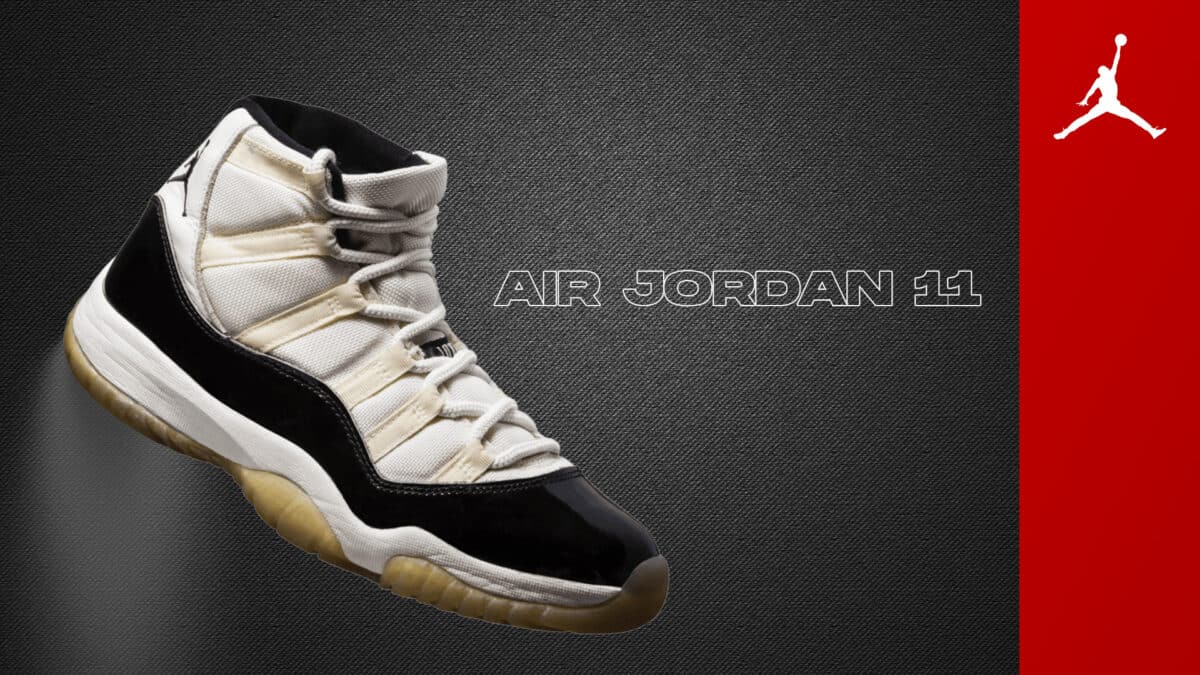
The Air Jordan XI, like its predecessors, pushed the boundaries of sneaker design. Inspired by formal dress shoes, it combined style, performance, and a touch of basketball wizardry. The result? A sneaker that oozed elegance and sophistication while still delivering top-notch on-court performance. It was a masterpiece of innovation. It introduced a patent leather upper, a bold departure from traditional basketball shoe materials. The shiny patent leather exuded a sense of luxury and style, elevating the sneaker to new heights of fashion-forward design. And let’s not forget the iconic translucent rubber outsole, which added a futuristic touch and became an instant trademark of the Air Jordan XI.
In the 1995-1996 NBA season, Michael Jordan and the Chicago Bulls set out for greatness. They steamrolled through the competition, and with the Air Jordan XI on his feet, MJ led the Bulls to triumph, solidifying his status as a basketball legend. With each step he took in the XIs, he reminded fans and critics alike that he was the undisputed king of the court.
This was also the era in which the movie Space Jam took the world by storm, combining Jordan’s talents with the lovable Looney Tunes characters. But one shining star stole the show—the Air Jordan 11. The Air Jordan 11’s prominent role in “Space Jam”, solidified its place in sneaker and pop culture history. It became more than just a shoe; it symbolised childhood dreams, imagination, and the power of teamwork. It inspired countless fans to believe they could achieve the impossible like MJ and the Tune Squad.
RELATED: Ranking The 8 Best Air Jordan 11 Sneaker Colourways of All Time
Air Jordan 12

The Air Jordan XII was a departure from its predecessors, introducing a fresh aesthetic that commanded attention. Inspired by Japan’s “Rising Sun” flag and Michael Jordan’s love for luxury sports cars, Tinker Hatfield went with unique details and premium materials to create a shoe with equal parts elegance and performance. It featured a bold upper made of leather or nubuck, exuding a sense of luxury that resonated with shoe lovers. Its most distinctive feature was the overlay resembling the eyelets of a corset, providing both structure and a visual flourish. This unique design element added to the shoe’s allure and served as a nod to MJ’s ability to tighten his grip on the game.
The Air Jordan XII incorporated advanced technology, such as a full-length Zoom Air unit and a carbon fibre shank plate, delivering optimal cushioning and stability.
Air Jordan 13
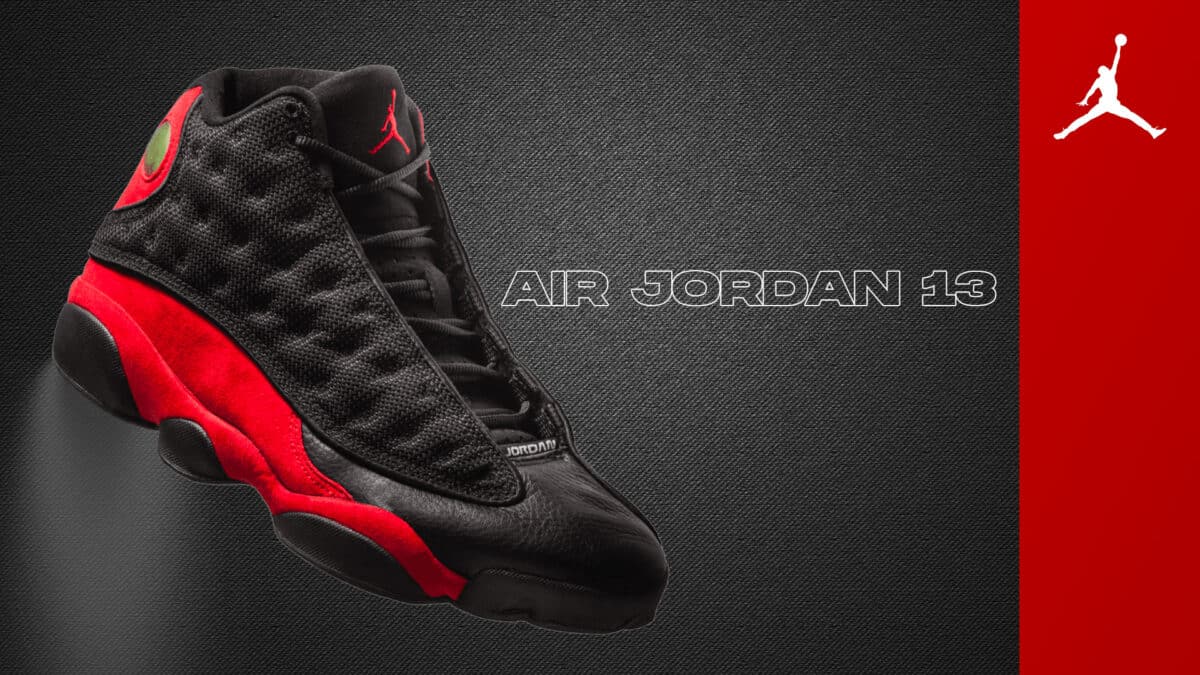
A new Air Jordan silhouette is on the prowl. Designed by Tinker Hatfield, this particular shoe showcased his ability to blend style, performance, and a touch of feline-inspired mystique. The Air Jordan XIII was designed to emulate a black cat’s sleek and agile movements, reflecting Michael Jordan’s lightning-quick reflexes on the court. Its defining feature was the holographic panther’s eye on the upper, creating an aura of mystery and capturing the essence of MJ’s powerful presence.
But the Air Jordan 13 was not just about looks—it also delivered on performance. It featured innovative technology, including a hidden lacing system for optimal lockdown and a carbon fibre shank plate for enhanced stability. The shoe’s Phylon midsole and Zoom Air cushioning provided a comfortable and responsive ride, allowing athletes to dominate the court with the grace of a stealthy feline.
Beyond its design and performance, the Air Jordan 13 became synonymous with Michael Jordan’s nickname, Black Cat. Known for his smooth and seemingly effortless playing style, MJ moved with the grace and precision of his feline alter ego. The shoe embodied this persona, extending Jordan’s on-court prowess and adding intrigue to its captivating design.
Today, the Air Jordan 13 continues to be cherished by sneakerheads and collectors. Its unique design and association with MJ’s Black Cat persona make it a must-have. It carries the spirit of a basketball legend and the mystique of its feline inspiration.
RELATED: The 15 Best Air Jordan Retro 13 Sneakers of All Time
Air Jordan 14
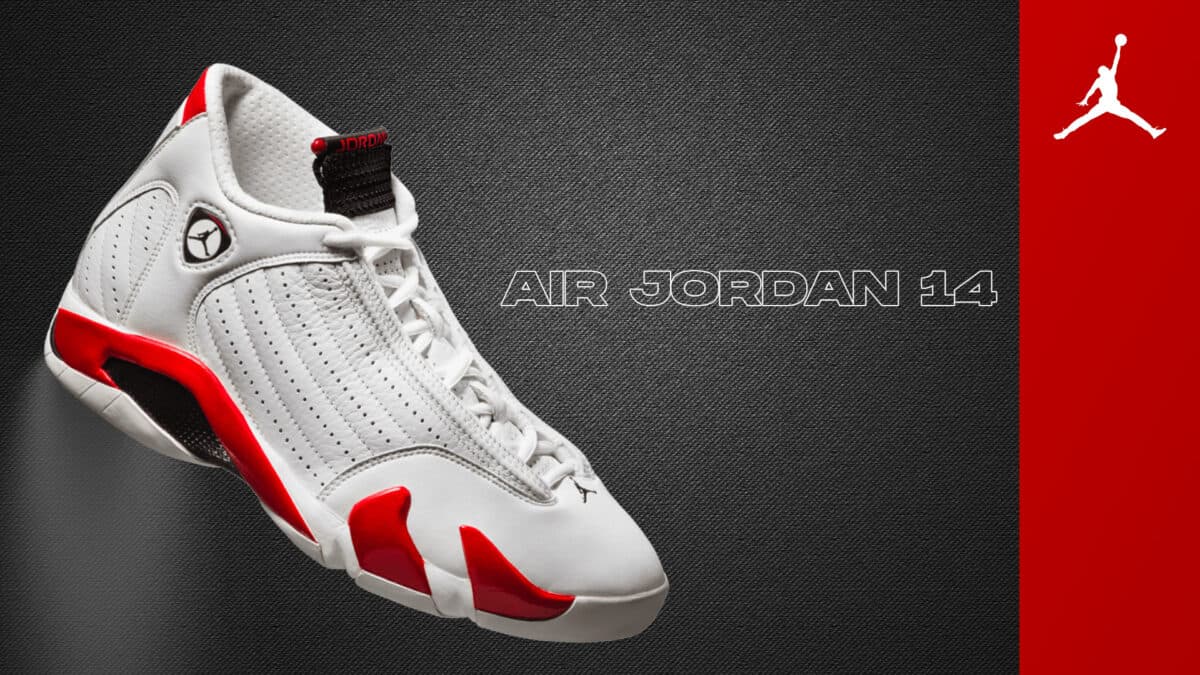
The Air Jordan XIV boasted a unique look inspired by Michael Jordan’s love for luxury sports cars. Tinker Hatfield incorporated design elements reminiscent of a Ferrari, reflecting MJ’s passion for the road. The shoe featured aerodynamic lines, mesh panels for breathability, and a midfoot shroud that added a touch of elegance and performance. It was a shoe that exuded speed and style like its legendary wearer.
As the XIV debuted, fans embraced its unique design and exceptional performance. Little did they know that this shoe would play a pivotal role in Michael Jordan’s historic final championship run. In the 1998 NBA Finals, Jordan donned the Air Jordan XIV as he led the Chicago Bulls to their sixth NBA championship and the second of their two three-peats. It was the perfect companion as MJ pushed himself to the limits, delivering iconic moments and sealing his legacy as the greatest of all time.
The Air Jordan XIV is forever remembered as a symbol of Jordan’s unwavering pursuit of greatness. It witnessed his ability to rise above challenges, defy expectations, and lead his team to victory one last time. With every step he took in the sneaker, MJ’s greatness shone brightly, leaving an indelible mark on basketball history.
RELATED: The Best Air Jordan 14 Retro Sneakers of All Time
Air Jordan 15

The Air Jordan XV is one of the ones that divided opinions and made waves in the sneaker community. The design of the Air Jordan 15 pushed the boundaries of what a basketball shoe could and should look like, and it certainly made a statement.
The Air Jordan XV featured a futuristic silhouette inspired by the X-15 fighter jet, channelling a sense of speed and innovation. Its most distinctive feature was the protruding tongue, which some affectionately called a “shroud.” This unique design element was meant to mimic the stealthy look of a fighter jet’s cockpit, but it also became a subject of playful jokes and raised a few eyebrows. Hmmm.
While the Air Jordan XV’s design was unique, it never graced the basketball court during Michael Jordan’s playing days. The shoe missed the opportunity to showcase its performance capabilities in the hands of the greatest player ever. Instead, it became a peculiar addition to the Air Jordan line-up, serving as a conversation starter and a testament to the brand’s willingness to take risks. Some loved the boldness and futuristic vibe, while others couldn’t help but poke fun at its unusual appearance.
Jordan newbies and enthusiasts should take a moment to appreciate the XV’s quirkiness and the playful personality it brings to the sneaker world. Embrace the boldness, and don’t be afraid to rock a shoe that dares to be different. After all, sneakers are meant to be fun and expressive.
Air Jordan 16
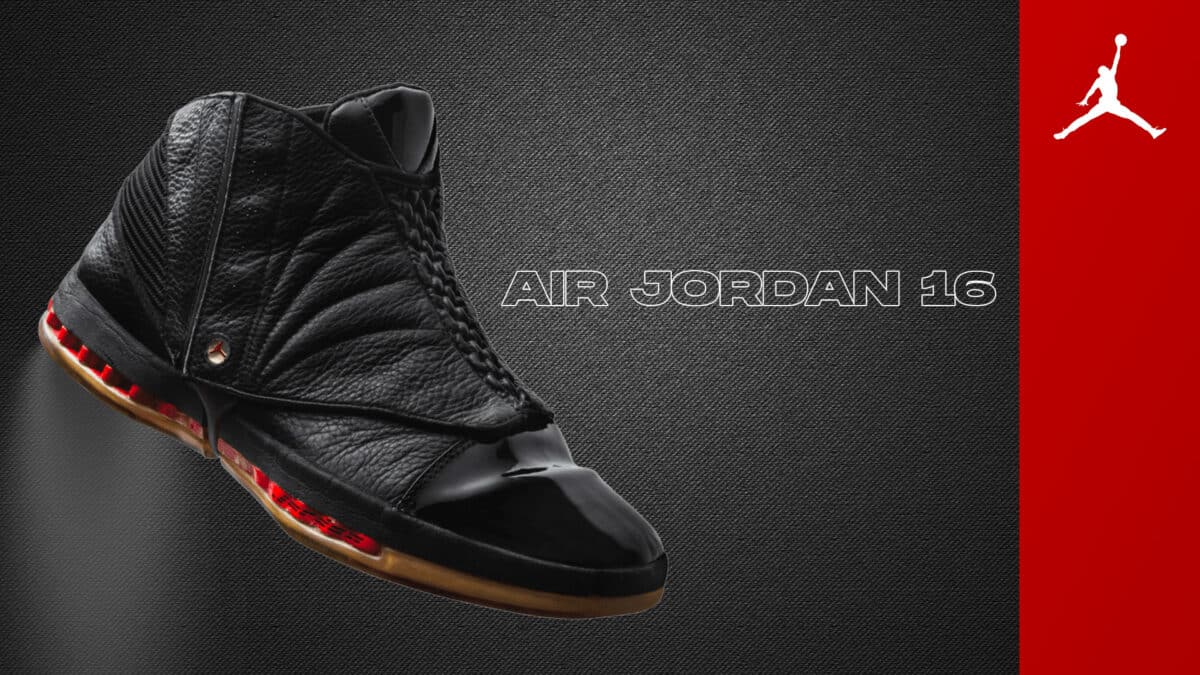
In 2001, Nike unveiled the Air Jordan XVI, a sneaker redefining style and performance. The mastermind behind this shoe was the talented Wilson Smith III, who took the reins as the lead designer of the Air Jordan line. Smith drew inspiration from the lines and materials of high-end Italian dress shoes and featured a patent leather toe cap and a removable gaiter, allowing wearers to customise their look and adapt to different playing styles. It was a design that perfectly mirrored the elegance and versatility of Michael Jordan’s game.
With the Air Jordan XVI on his feet, MJ was ready to write a new chapter in his basketball journey. It marked a turning point in Michael Jordan’s life and career, released during his tenure with the Washington Wizards, a new chapter for the basketball icon. After his legendary years with the Chicago Bulls, MJ embarked on a new adventure, bringing his magic to the nation’s capital. The Air Jordan XVI symbolised his enduring legacy and determination to continue his love affair with the game he dominated.
While the Air Jordan XVI didn’t witness the same championship glory as its predecessors, it represented a fresh start for MJ and an opportunity to inspire a new generation of basketball fans. It was a shoe that showcased his unwavering passion, resilience, and love for the game, even as his career entered its final stages.
Air Jordan 17
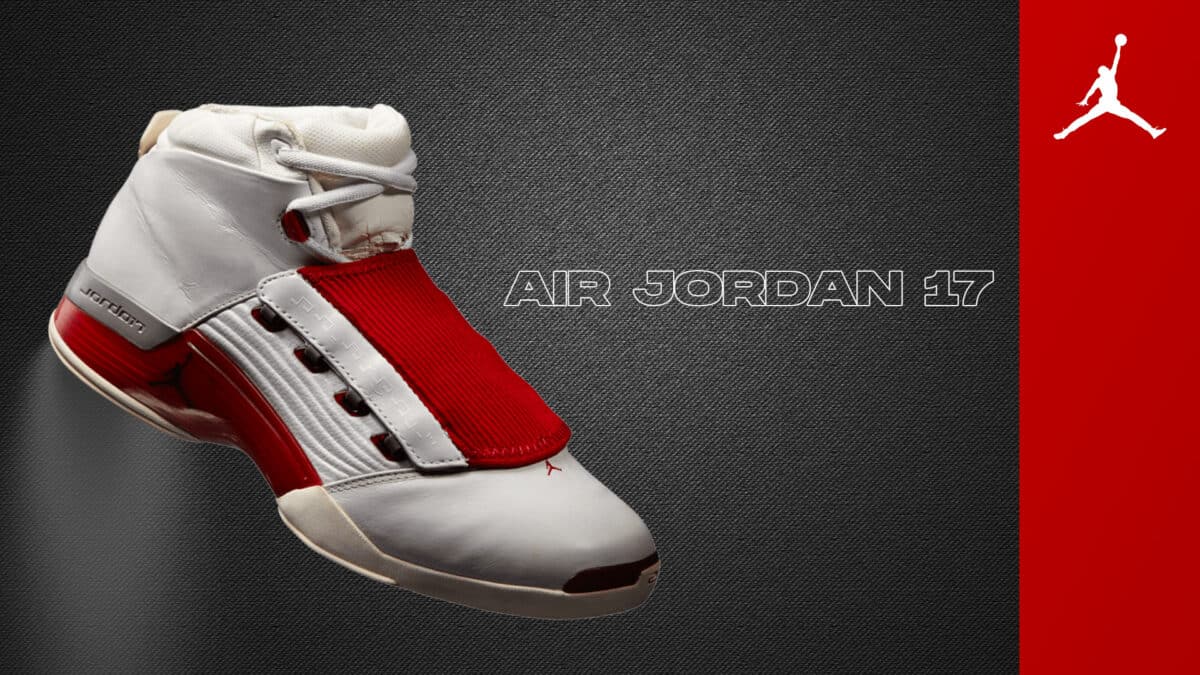
2002. Michael Jordan decided to lace up his sneakers again and triumphantly return to the court. It was a moment that sent shockwaves through the sports world, and Nike was ready to capture the magic with the Air Jordan XVII.
The design of the Air Jordan XVII was a collaborative effort between Michael Jordan himself and Wilson Smith III. Together, they crafted a shoe representing Jordan’s comeback and relentless pursuit of excellence. The sneaker went for a sophisticated look, drawing inspiration from jazz and luxury sports cars, reflecting MJ’s smooth moves and love for life’s finer things.
The Air Jordan XVII featured a full-length carbon fibre plate for stability, a removable midfoot strap for added support, and a dynamic fit sleeve that hugged the foot like a glove. The shoe was designed to enhance performance, providing comfort, style, and functionality.
The Air Jordan XVII symbolised Jordan’s return to the court and his indomitable spirit. It witnessed MJ’s determination to prove that he still had what it takes to compete at the highest level. He reminded fans and critics alike that he was again back and ready to dominate. The shoe’s essence was to capture the spirit of resilience, determination and never giving up.
Air Jordan 18
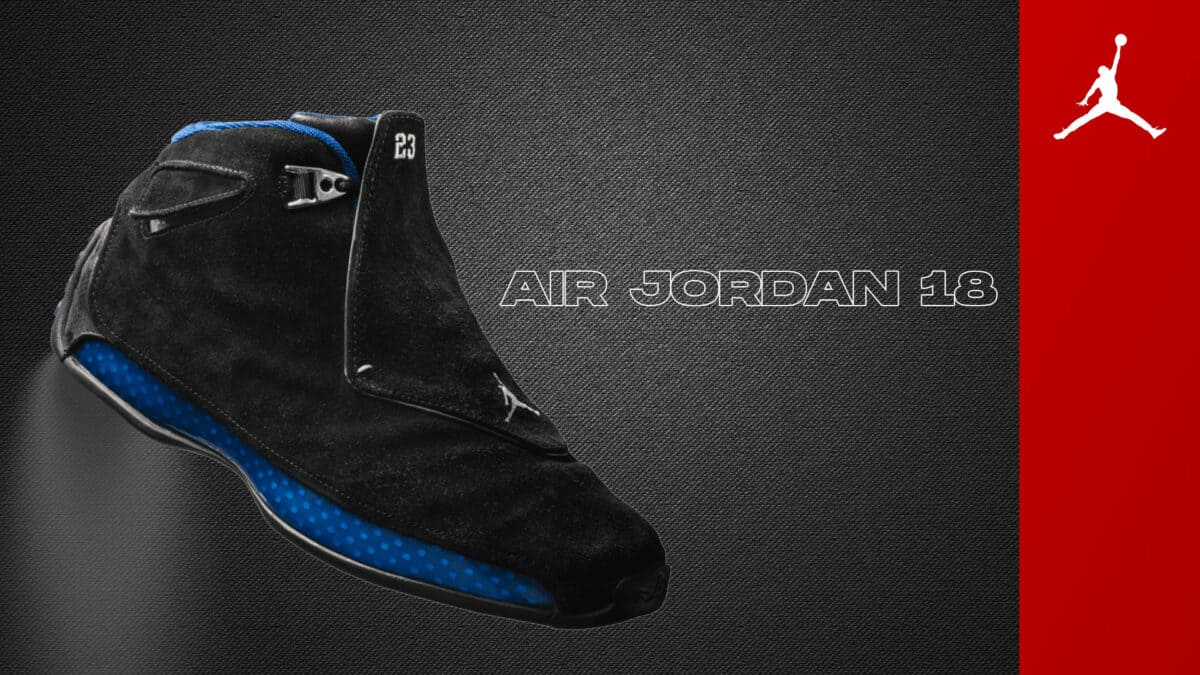
In the year the Air Jordan XVIII was released, Michael Jordan announced his retirement for the third time, leaving fans and sneakerheads with a sense of both gratitude and sadness. In commemorating his remarkable career, Nike unveiled the Air Jordan XVIII, a collaboration between Tate Kuerbis and Mark Smith, who sought to encapsulate the sophistication and class associated with Michael Jordan. The shoe showcased a luxurious aesthetic, with a suede or leather upper and tasteful stitching. Its sleek and streamlined silhouette embodied MJ’s elegance and grace on the court.
The Air Jordan XVIII featured several unique elements, including a hidden lacing system and a prominent heel pull tab, which made slipping into the shoe a breeze. Its midsole boasted full-length Zoom Air cushioning for maximum comfort and responsiveness—a fitting tribute to Jordan’s explosive style of play. The shoe resonated with fans, reminding them of the countless memories and breathtaking moments that Jordan had delivered throughout his illustrious career.
Air Jordan 19
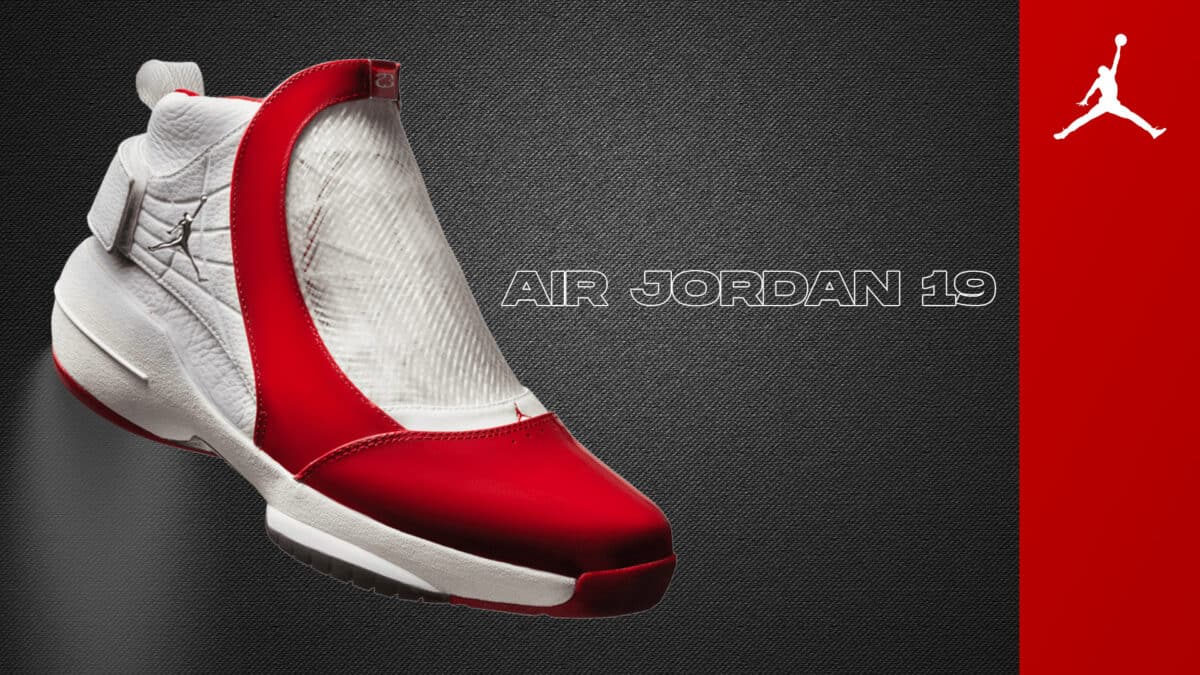
In 2004, Nike introduced the Air Jordan XIX, a shoe that embraced the twisted beauty of African snakes, in particular, the black mamba. The design genius behind this striking creation was Tate Kuerbis, who unleashed his imagination and brought the snake’s essence to life.
Inspired by the mamba, the shoe incorporated unique textures and patterns that mirrored their slithering grace. The upper featured a combination of premium materials, creating a sense of luxury and elegance. It was designed with performance in mind. It boasted an innovative Tech Flex upper, which provided a dynamic fit and exceptional support. The shoe also featured Zoom Air cushioning and a Phylon midsole for maximum comfort and responsiveness on the court.
While the Air Jordan XIX’s snake-inspired design may have raised a few eyebrows, it quickly became a talking point among sneaker enthusiasts. It was a shoe that stood out from the crowd, showcasing the audacity and creativity of its designer. It allowed wearers to embrace their wild side and make a truly unforgettable fashion statement.
Air Jordan 20
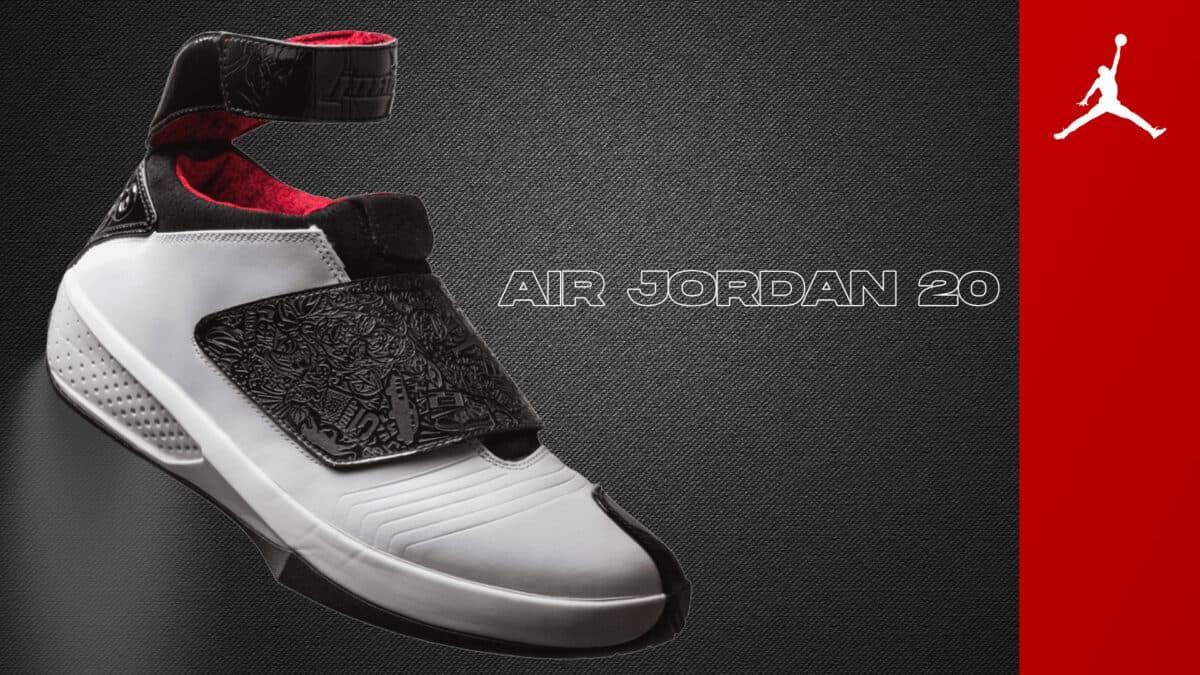
Nike and Michael Jordan reunited with legendary designer Tinker Hatfield to create the Air Jordan XX, a shoe commemorating MJ’s illustrious career and showcasing his remarkable achievements. The result was a masterpiece that captured the essence of Jordan’s life story. It featured an innovative lace cover system that provided a seamless look, symbolising the elegance and style that defined Jordan’s game. Air Jordan XX went above and beyond to commemorate specific milestones in MJ’s career. The shoe incorporated unique icons and symbols representing various aspects of his life. From the laser-etched “CDP” logo honouring Jordan’s second slam dunk title to the basketball icons imprinted on the midsole, each detail told a story.
One of the most remarkable design elements of the Air Jordan XX was the dimples on the side panels, celebrating Michael Jordan’s highest-scoring game—a jaw-dropping 69-point performance against the Cleveland Cavaliers (we talked about it earlier). These dimples were not just a visual detail but a tribute to an extraordinary moment in basketball history.
Today, the Air Jordan XX remains a beloved collector’s item. Its unique design and connection to his life story make it a piece of sneaker history and help it stand as a testament to the lasting impact of a basketball legend.
Air Jordan 21
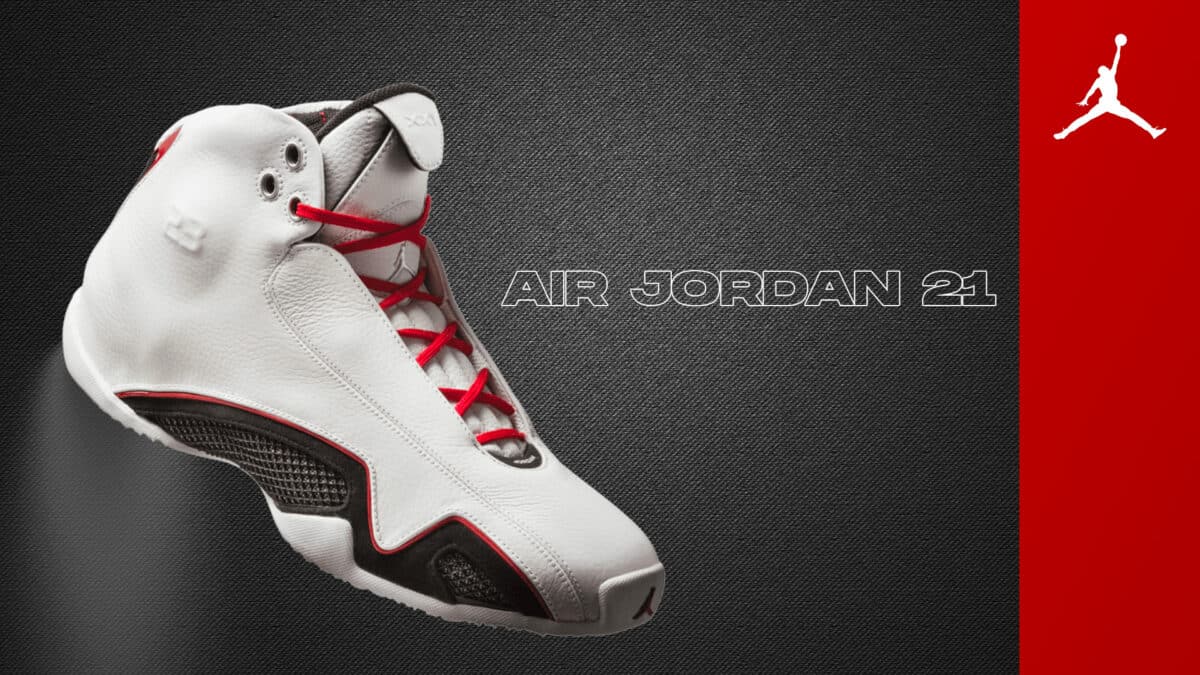
In 2006, Nike enlisted designer D’Wayne Edwards to craft the Air Jordan XXI, a shoe that would redefine what it meant to be ahead of its time. Edwards, known for his innovative approach to footwear design, embarked on a mission to create a shoe that embodied both performance and style.
The Air Jordan XXI’s design was a work of art inspired by the sleek lines of a luxury automobile. The upper featured a mix of premium materials, from patent leather to suede, creating a harmonious balance of texture and luxury. The sneaker delved into the realm of customisation. The shoe featured interchangeable cushioning pods that allowed wearers to personalise their experience. Whether you preferred a responsive feel or added comfort, it was like having a sneaker tailor-made just for you,
The Air Jordan XXI also incorporated details that celebrated Michael Jordan’s career milestones. From the stitched “23” on the side panels to the embossed basketball pattern, each element paid homage to the iconic moments that made MJ a legend. It featured a carbon fibre shank plate for stability, Zoom Air cushioning for optimal responsiveness, and a herringbone traction pattern for superior grip on the court.
To this day, the Air Jordan XXI is a favourite among sneaker enthusiasts and collectors because of its ability to be customised.
Air Jordan 22
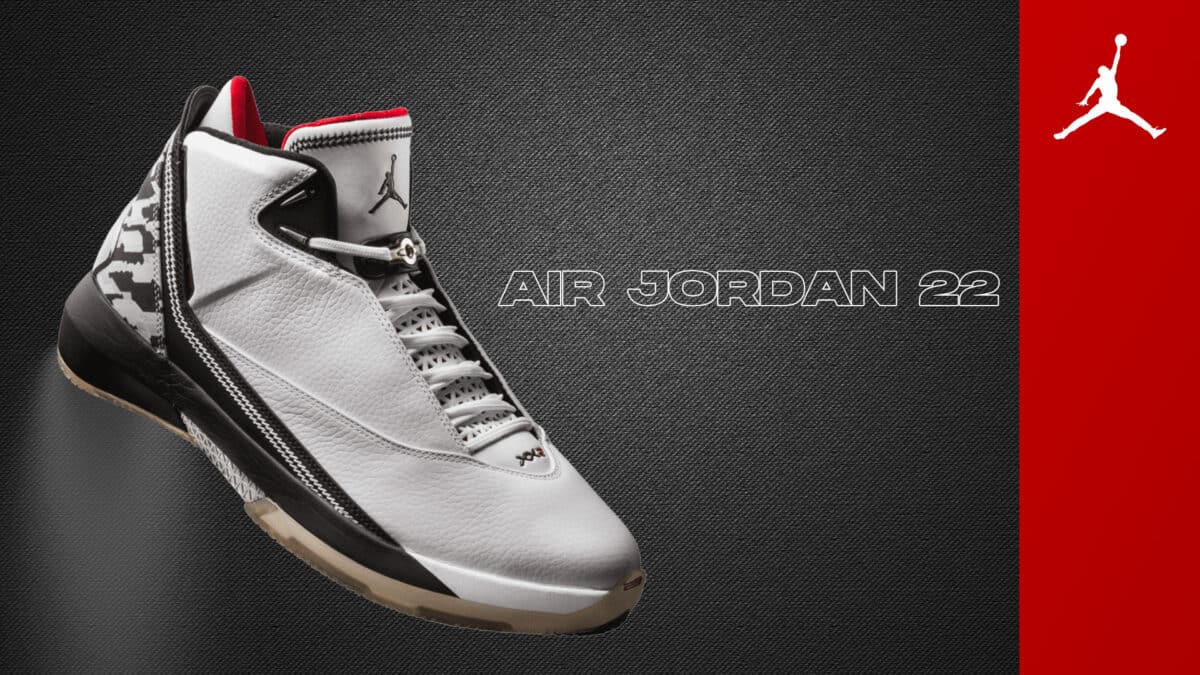
For its 22nd signature Air Jordans, Nike collaborated with designer D’WayneEdwards. Edwards, known for his ingenuity, took inspiration from fighter jets and the notion of “stealth” to craft a shoe that would make heads turn. One of the standout features of the Air Jordan 22 was its shank plate—an innovation that provided torsional rigidity for stability and support. This element, inspired by the structural design of fighter planes, ensured that wearers could make swift moves on the court without sacrificing balance or control. It was like having a wingman in sneaker form, always there to have your back.
But the ingenuity didn’t stop there. The Air Jordan XX2 introduced a traction pattern inspired by the F-22 Raptor stealth fighter jet. This pattern provided exceptional grip on the court, allowing wearers to change direction easily and quickly. And remember the customisable cushioning technology offered by the Air Jordan 22. The shoe featured interchangeable Zoom Air cushioning pods that allowed wearers to tailor their experience to their liking. Whether you preferred more responsiveness or added comfort, the Air Jordan XX2 allowed you to fine-tune your performance and make every step your own.
Air Jordan 23
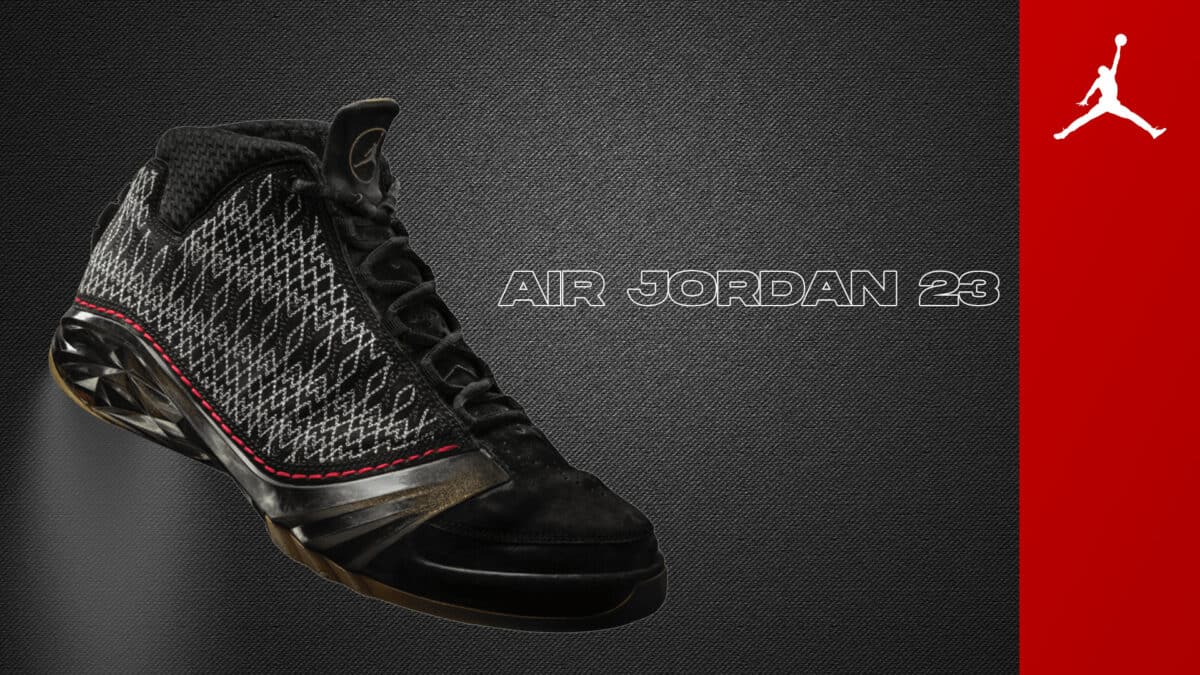
Designed by Tinker Hatfield alongside Mark Smith, the Air Jordan XX3 was not just a shoe but a work of art. Its design incorporated exquisite details that celebrated MJ’s legacy. For instance, the shoe featured MJ’s thumbprint on the tongue, symbolising his unique imprint on basketball. It was like having a piece of MJ’s greatness at your fingertips – quite literally!
The Air Jordan XX3 also showcased a DNA-inspired stitching pattern, weaving together the threads of Jordan’s incredible journey. Each stitch represented a moment, a triumph, or a defining aspect of MJ’s career. The shoe also featured his signature on the toe, like an autograph of approval. It was a reminder that every time you laced up these kicks, you were tapping into the spirit of the basketball icon.
RELATED: 12 Best Nike Air Jordan Retro 23 Sneakers of All Time
Air Jordan 2009
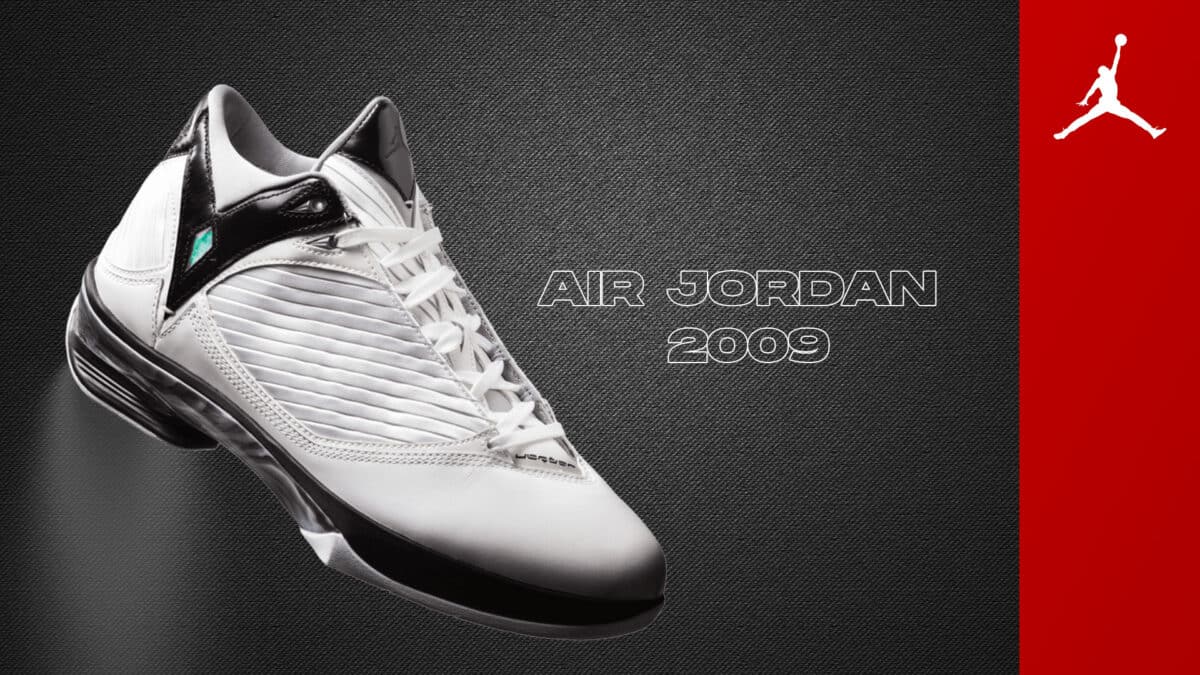
Step onto the court with the Air Jordan 2009, a shoe that not only introduced a change in the naming convention but also paid tribute to the defensive prowess of His Airness.
Jason Mayden was the designer called upon this time to helm the creation of the Air Jordan 2009. The Air Jordan 2009 brought a fresh perspective to the table with its modern design. The shoe drew inspiration from the world of fencing, infusing elements of the sport into its design. It was a nod to MJ’s ability to guard and outmanoeuvre his opponents with finesse and precision.
The Air Jordan 2009 featured unique touches that set it apart from its predecessors. It incorporated a mesh upper with laser-cut diamond-shaped perforations, evoking the pattern seen on fencing masks. This added a touch of visual intrigue and provided breathability and lightweight comfort, keeping you swift on your feet like a nimble fencer.
But the design magic didn’t stop there – the Air Jordan 2009 also incorporated a unique lace cover system resembling fencers’ protective masks. This element added a touch of style and enhanced lockdown and stability, ensuring a secure fit as you made swift moves on the court.
The Air Jordan 2009 showcased the brand’s commitment to innovation and storytelling. It demonstrated that basketball sneakers could draw inspiration from diverse sources and bring something entirely new to the table. With its emphasis on defence and its nod to the world of fencing, the Air Jordan 2009 added a unique twist to the Air Jordan lineage.
En garde!
Air Jordan 2010
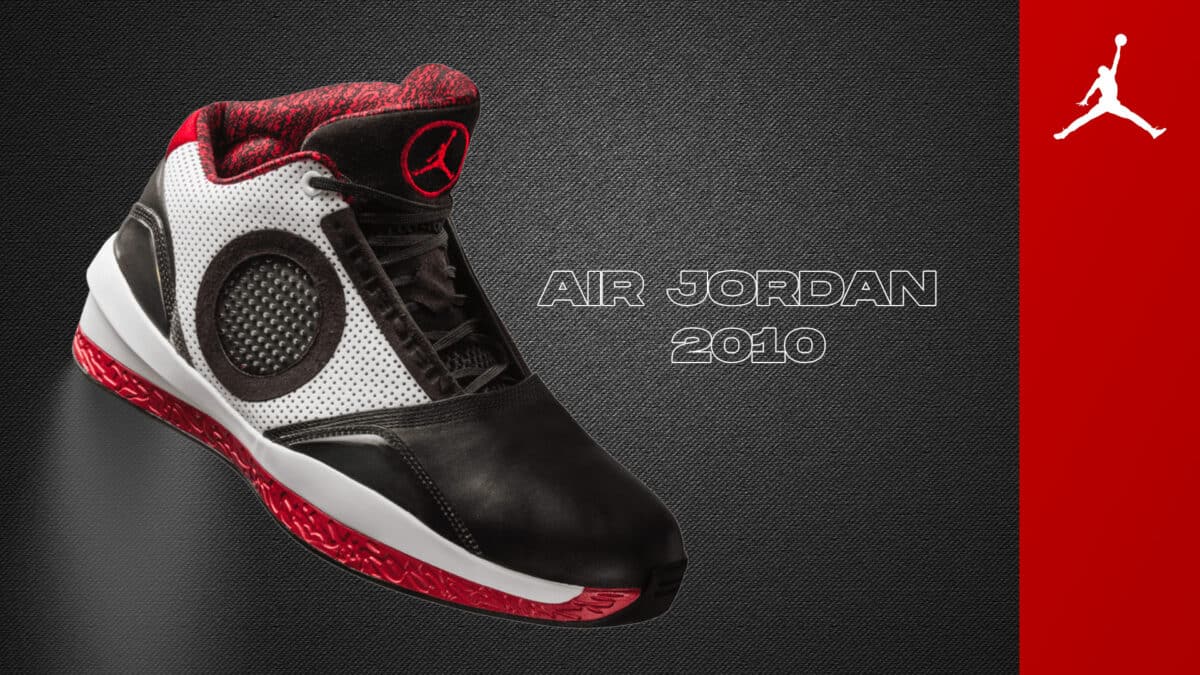
The year, if you haven’t pieced it together from the shoe’s name, was 2010, and Nike brought back Tinker Hatfield to create the Air Jordan 2010, which
introduced a stunning and unique new design feature that caught the attention of sneakerheads worldwide – the transparent TPU windows. These windows, strategically placed on the upper, provided a glimpse into the inner workings of the shoe. It was like peering into the future of sneaker design, revealing the intricate details and technology that made the Air Jordan 2010 stand out. It was like MJ himself inviting all of us into his world and saying, “Hey, take a peek into how I get things done”.
The Air Jordan 2010 was engineered for performance. The shoe featured a responsive Zoom Air unit embedded in the outsole, providing exceptional cushioning and support.
The Air Jordan 2010 is where style meets technology, where transparency sparks curiosity, and where innovation propels you to greatness.
Air Jordan 2011
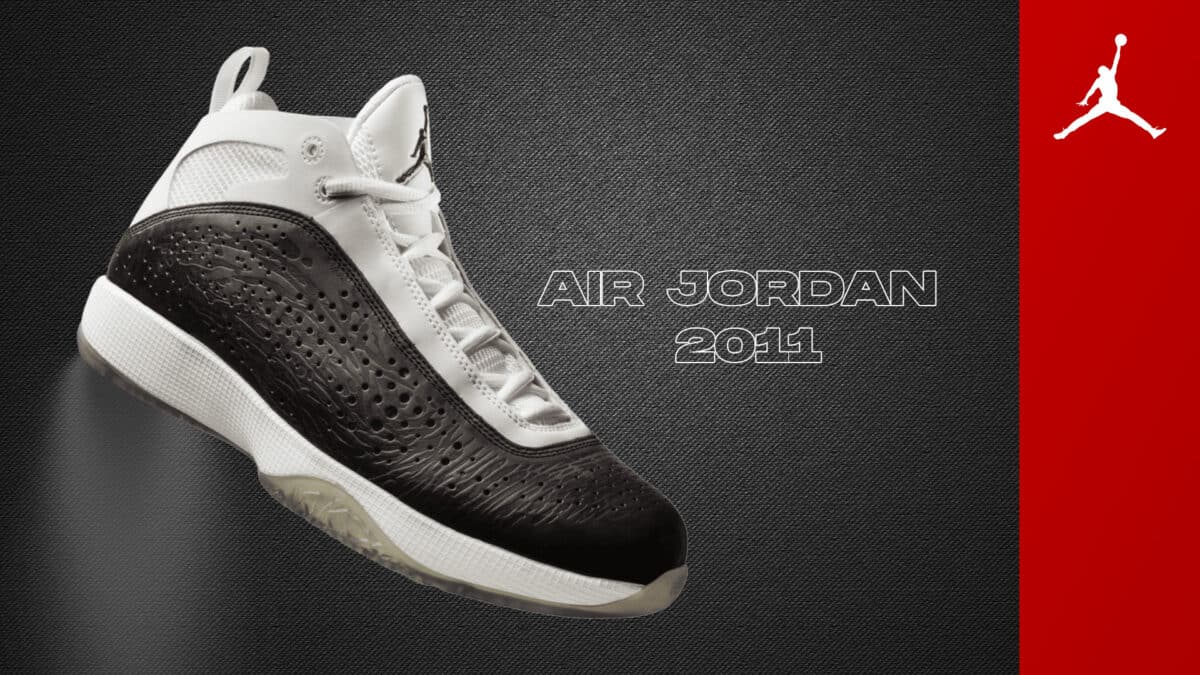
Tinker Hatfield and footwear innovator Tom Luedecke collaborated to create the Air Jordan 2011. This shoe introduced a unique concept – the ability to customise the shoe based on playing style and personal preference. It featured interchangeable midsoles, allowing wearers to choose between different cushioning setups. This innovation empowered athletes to fine-tune their performance, finding the perfect balance between comfort and responsiveness.
The design of the Air Jordan 2011 included premium materials like patent leather and mesh. It was like strapping on a work of art, combining style and functionality seamlessly. It incorporated advanced technology like the Independent Podular Suspension (IPS) system, which provided targeted support and cushioning. The Air Jordan 2011 exemplified the relentless pursuit of perfection. It strived to demonstrate that sneakers could be more than just footwear but also an extension of an athlete’s style and performance. With its customisable features and cutting-edge technology, the Air Jordan 2011 became a true game-changer in the sneaker world.
Air Jordan 2012
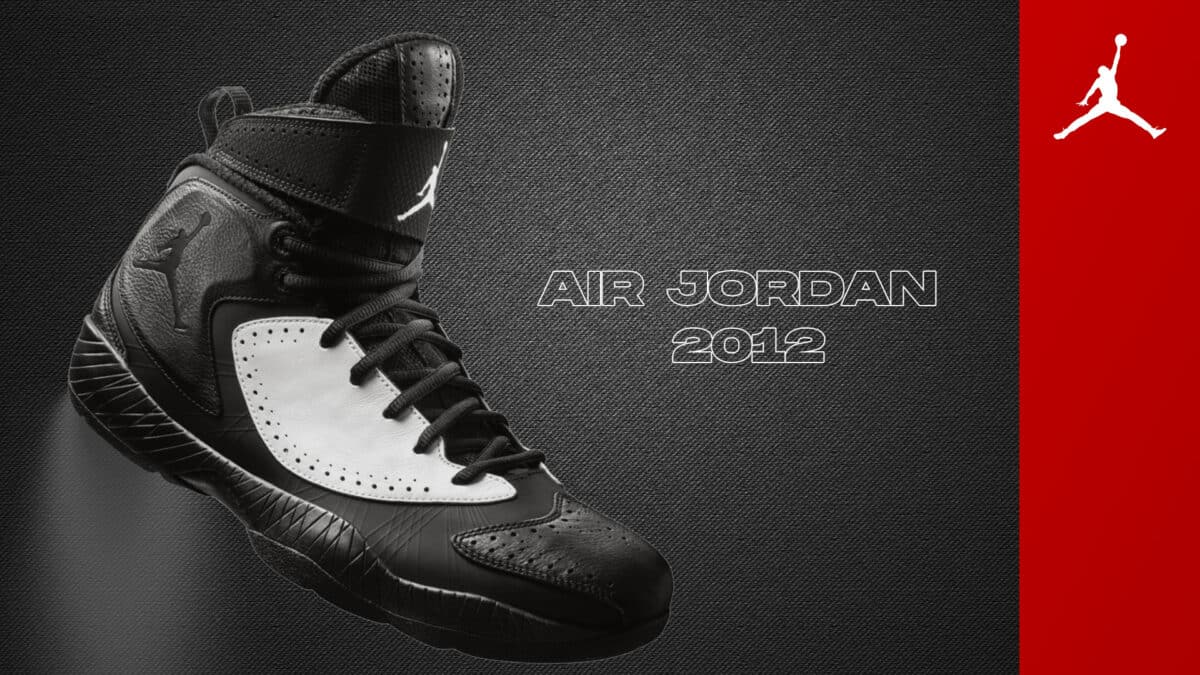
In 2012, Nike once again entrusted designer Tinker Hatfield, Tom Luedecke and the talented Jordan Brand design team to create the Air Jordan 2012.
The 2012 edition Air Jordan embraced the unique concept of “One Shoe, Three Flights”, featuring interchangeable inner sleeves, allowing wearers to customise their experience based on their playing style and preference. Whether you desired explosive speed, responsive cushioning, or superior support, the Air Jordan 2012 had you covered. It was like having three shoes in one – perfect for athletes who wanted to adapt their game on the fly.
This sneaker demonstrated that sneakers could be more than just performance tools but also fashion statements, adaptability enhancers, and a source of inspiration for athletes worldwide.
Air Jordan 28

The XX8, besides its exceptional design, also captured the fearless mentality of NBA superstar Russell Westbrook. Anyone who’s watched Westbrook play over the years knows much about his talent, incredible work ethic, tenacity, killer mentality and commitment to basketball. Does this sound like someone we’ve been talking about all through this deep dive?
Josh Heard was brought on board to create the Air Jordan XX8, and straight away, it was clear what he wanted to achieve. This shoe would be the perfect canvas to highlight the explosive energy and relentless mindset of Russell Westbrook, one of the fiercest competitors in the game.
The Air Jordan XX8 featured a striking design that impressed sneaker lovers everywhere. Its standout feature was the innovative “zip-up” shroud that covered the upper, providing a futuristic look. This design allowed wearers to customise their style, whether they wanted to keep it low-key or reveal the vibrant colours underneath.
The shoe featured a unique Flight Plate technology that combined Nike Zoom Air cushioning and carbon fibre for enhanced responsiveness and support. It represented the passion, intensity, and individuality that define Westbrook’s game. You could tap into Westbrook’s relentless drive and showcase your unyielding spirit with every wear.
When you step into a pair of XX8s, you’re stepping into the mindset of a champion, ready to dominate the court with confidence and style. So, zip up, take flight, and take over the show!
Air Jordan 29
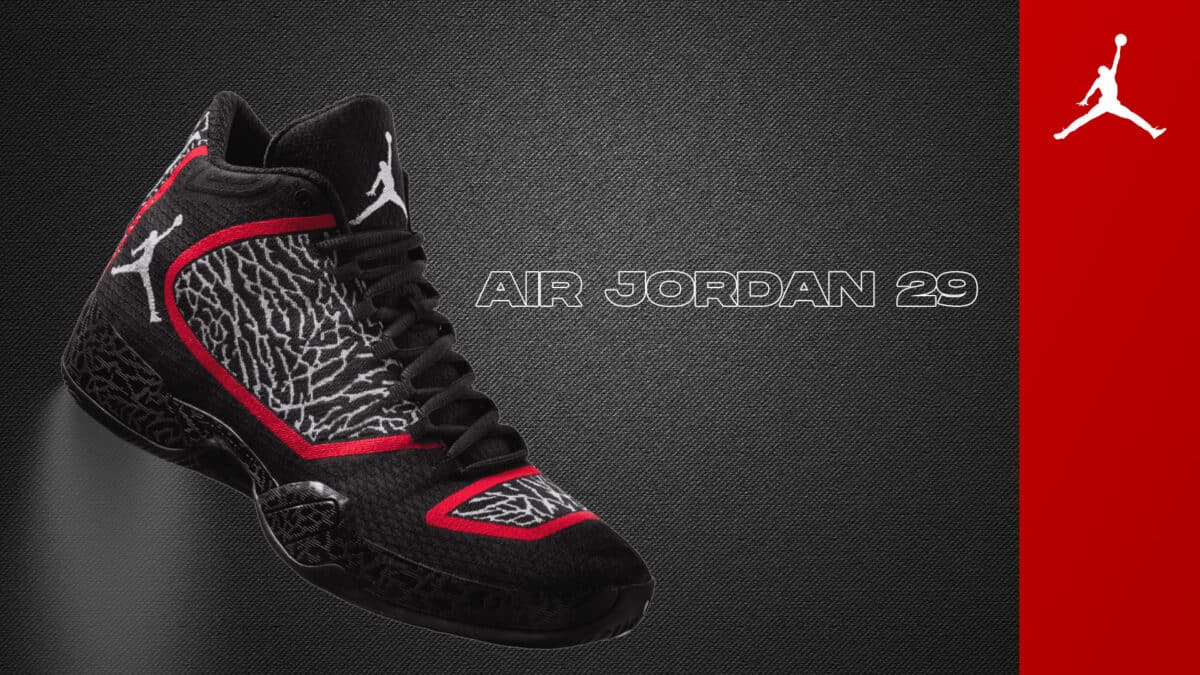
The Air Jordan XX9s boasted exceptional design and revolutionised the game as the world’s first woven basketball shoe. Tinker Hatfield, alongside Josh Heard, answered the call again, working together to create the Air Jordan XX9.
The Air Jordan XX9 introduced a revolutionary design element—the woven upper. It was like a textile marvel, meticulously engineered to deliver flexibility, breathability, and support exactly where you needed it on the court. This innovative construction approach allowed for a precise fit and optimal performance as if the shoe was tailored specifically for your foot.
The Air Jordan XX9 pushed the boundaries of sneaker technology. It incorporated Flight Plate technology – a Pebax moderator plate with a Zoom Air unit – to provide optimal cushioning and responsiveness.
Air Jordan 30
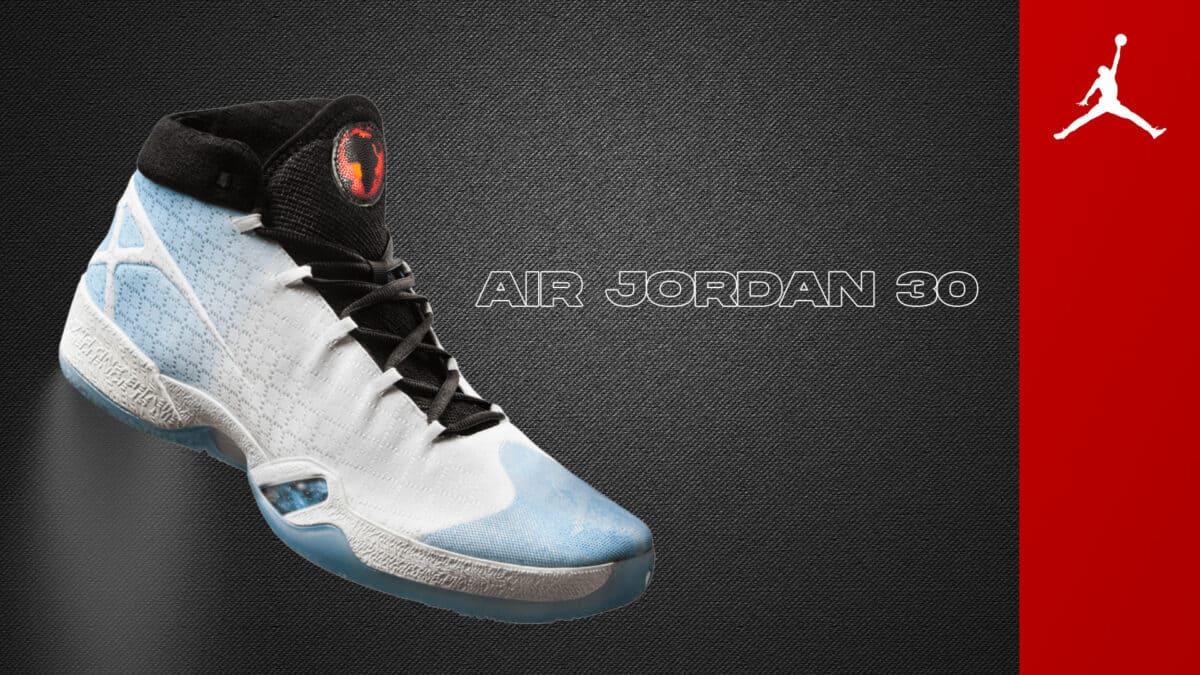
Get ready to celebrate three decades of sneaker excellence with the Air Jordan XXX. This shoe not only embodies the exceptional design and performance of the Air Jordan line but also pays homage to the legacy of Michael Jordan. In 2016, Nike again turned to Tinker Hatfield to design the Air Jordan XXX. Hatfield sought inspiration from Michael Jordan, delving into the rich history and achievements of the iconic basketball legend.
The Air Jordan XXX captured the essence of Michael Jordan’s greatness and served as a tribute to his legacy, combining performance and style in a way only the Air Jordan line could deliver. The design of the Air Jordan XXX showcased a seamless blend of modern aesthetics and innovative technology. It featured a unique woven upper that provided a lightweight and breathable feel, allowing optimal court performance. The shoe also incorporated FlightSpeed technology, enhancing responsiveness and providing explosive energy return with every step.
With the Air Jordan XXX on your feet, you’re stepping into a story of greatness, inspiration, and the pursuit of immortality.
Air Jordan 31
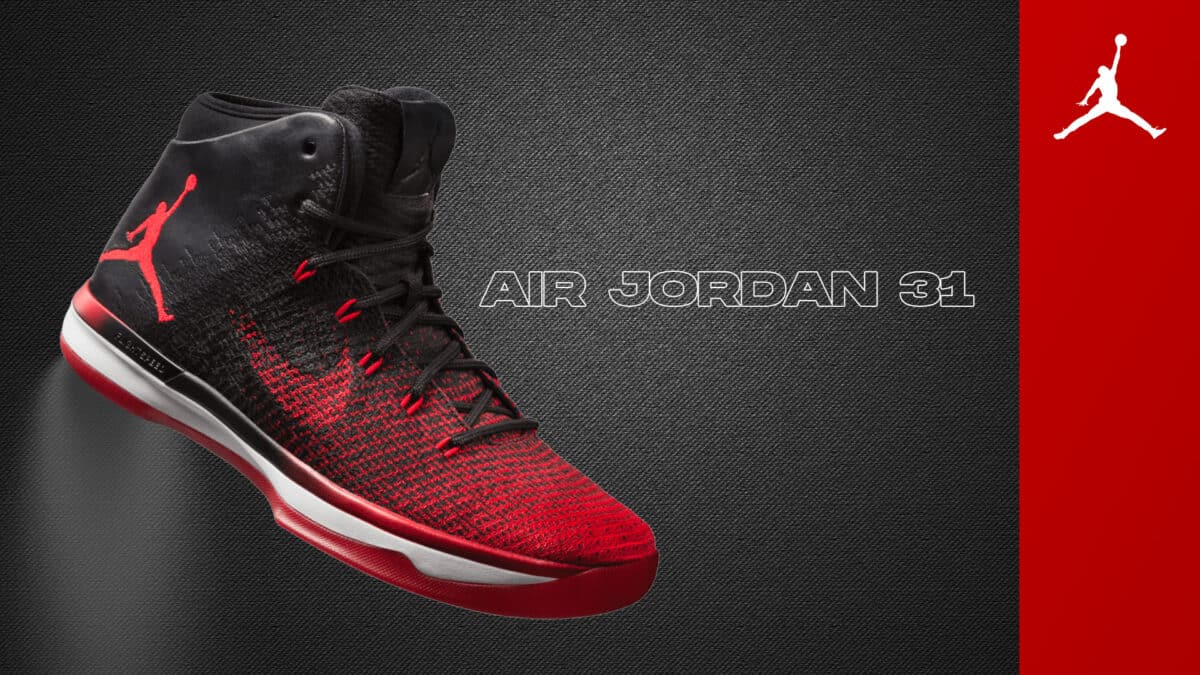
The Air Jordan XXXI pushed the boundaries of performance and style. This shoe arrived on the scene just as Russell Westbrook, the electrifying, no-nonsense NBA player suiting up for the Oklahoma City Thunder, made waves with his incredible talent and fierce determination. The Air Jordan XXXI was a fitting canvas for Westbrook’s rise to stardom. In ethos, it mirrored his explosive playing style – a fearless energy and indomitable spirit that made him a force to be reckoned with on the court.
But the design of the Air Jordan XXXI wasn’t solely focused on performance – it also paid homage to the iconic Air Jordan I. The shoe featured a fusion of modern aesthetics and classic elements, like the iconic “Wings” logo and the Swoosh, blending the past with the present in a seamless way.
The Air Jordan XXXI marked a turning point in sneaker design, encapsulating the dynamic energy of Westbrook and the evolution of the Air Jordan line. With its innovative Flyweave upper and supportive Flywire cables, the shoe provides the perfect flexibility, stability, and style.
Today, the Air Jordan XXXI remains a sought-after gem, cherished by sneaker enthusiasts and fans of Westbrook alike. Its unique design and performance features continue to captivate fans, reminding us of the unstoppable rise of a superstar and the timeless appeal of the Air Jordan brand.
Air Jordan 32
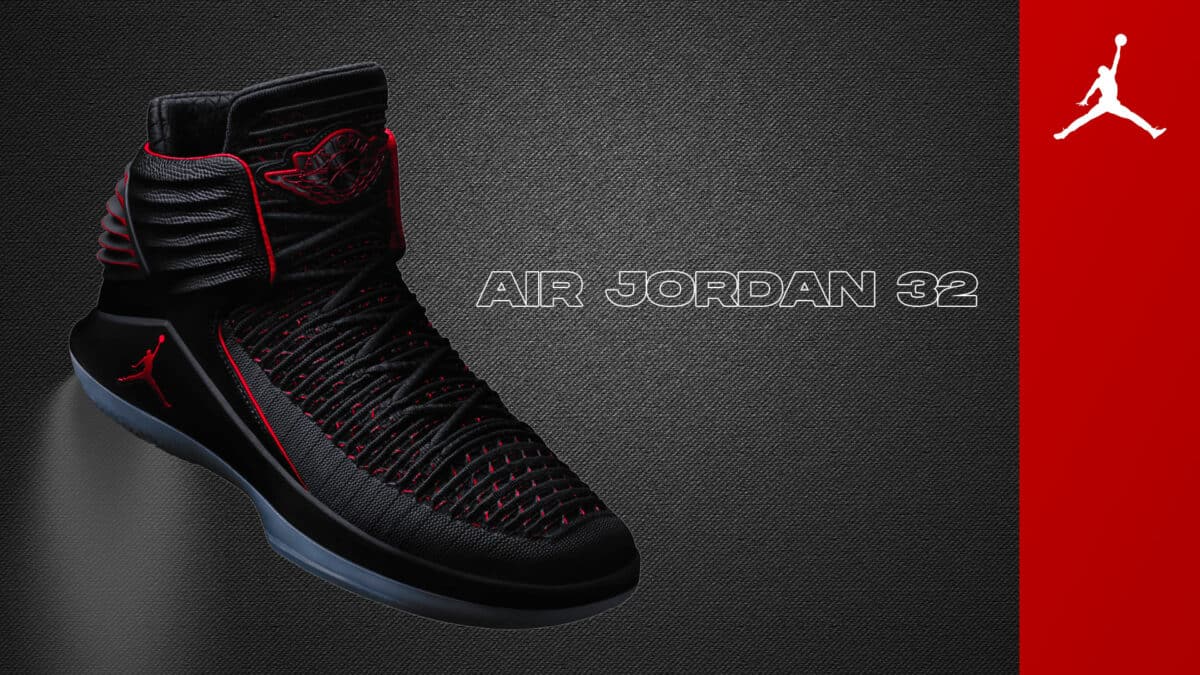
Tate Kuerbis and the talented Jordan Brand design team worked hard to create the Air Jordan XXXII, whose design philosophy revolved around a harmonious blend of heritage and innovation. It paid tribute to the iconic Air Jordan II, one of the most beloved sneakers in history, while incorporating cutting-edge features to meet the demands of modern-day athletes.
The Air Jordan XXXII showcased a streamlined silhouette that harkened back to the timeless elegance of the Air Jordan II. It captured the essence of the original design while adding contemporary elements that elevated it to new heights. It was like witnessing a beautiful evolution—a nod to the past with a firm grip on the future.
It incorporated advanced technology to deliver exceptional performance. The shoe featured a Flyknit upper that provided a snug and supportive fit, while the FlightSpeed technology in the midsole enhanced responsiveness and cushioning.
Air Jordan 33
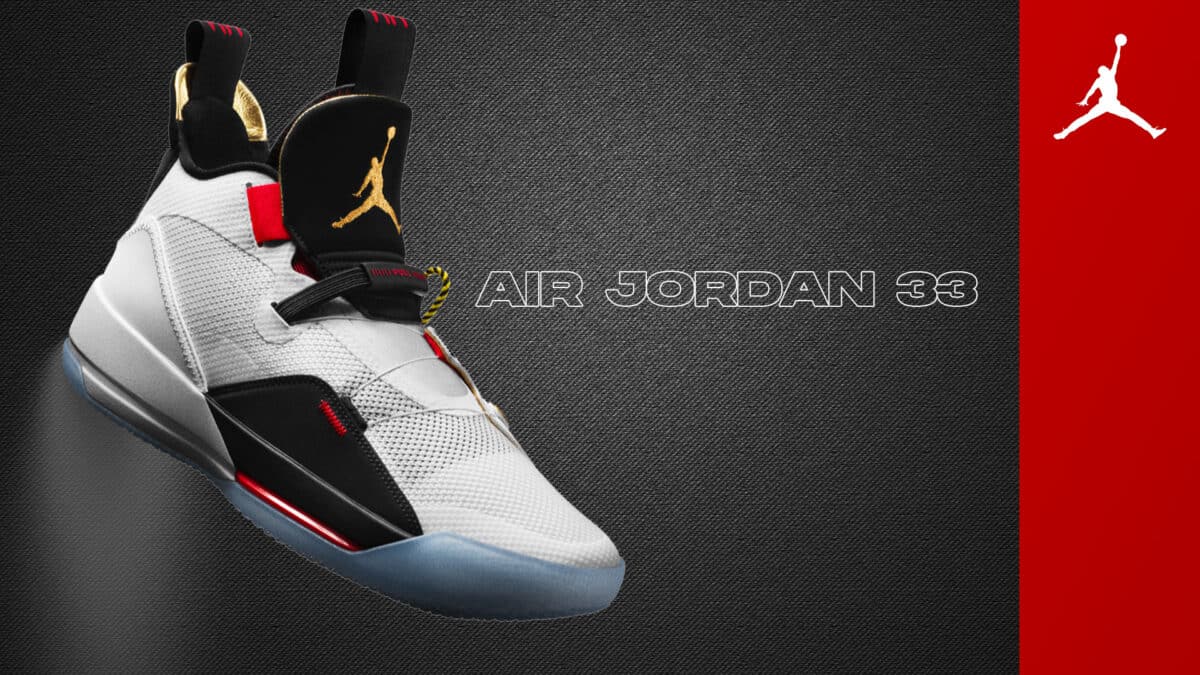
Designed by Tate Kuerbis in 2018, the design philosophy of the Air Jordan XXXIII centred around the concept of simplicity and efficiency. It embraced a minimalist approach, stripping away unnecessary layers and focusing on what truly mattered—the perfect fit and unrivalled performance.
The Air Jordan XXXIII introduced a new technology known as FastFit. This feature introduced a new way of lacing up your shoes, allowing quick and easy adjustments to achieve the ideal fit. It was like stepping into a shoe that precisely hugged your foot, providing unparalleled lockdown and support. The Air Jordan XXXIII made the shoe feel like an extension of your foot, enhancing your agility and giving you the confidence to make swift moves on the court. With the FastFit technology, you could forget about the distractions and fully immerse yourself in the game.
Air Jordan 34
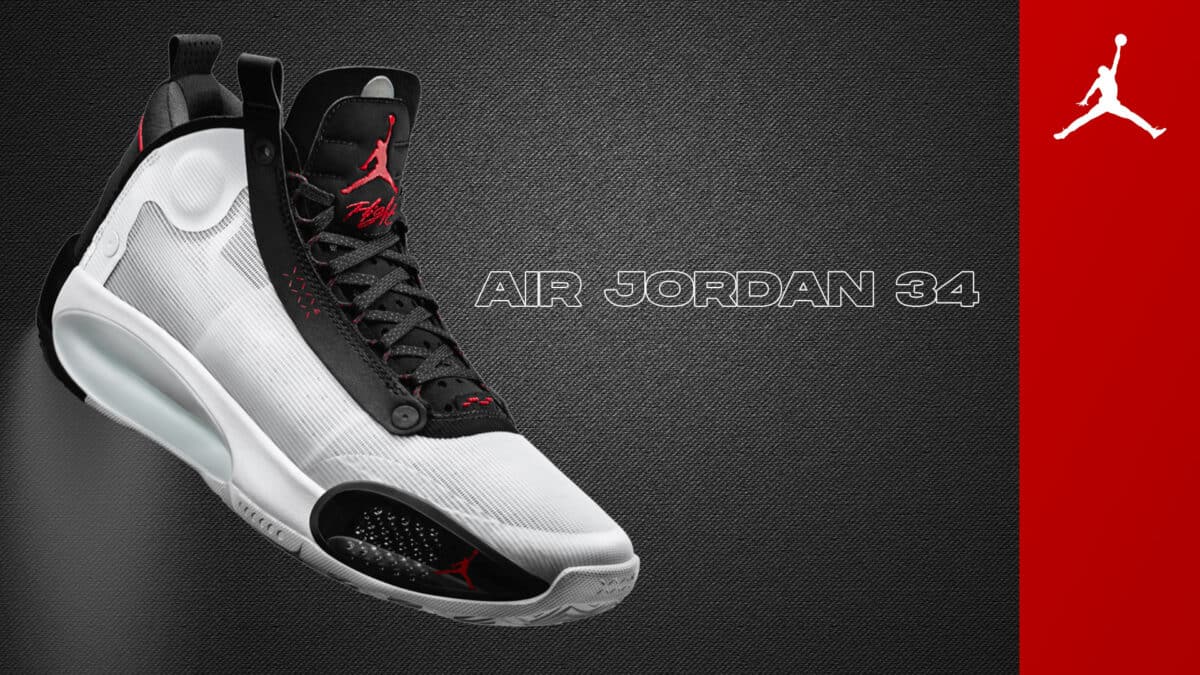
2019. Nike roped in designer Tate Kuerbis to create the Air Jordan XXXIV, a shoe renowned for its feathery lightness. Kuerbis, a real innovator, set out to design a shoe that would push the boundaries of weight reduction without compromising on performance. Therefore, the Air Jordan XXXIV’s design philosophy was centred around the idea of “less is more.” It embraced a minimalist approach, removing excess layers and focusing on essential elements to create an incredibly lightweight shoe.
The Air Jordan XXXIV provided a delightful sensation of lightness and delivered on performance. It incorporated features like the Eclipse Plate, a carbon fibre midfoot shank that provided stability and responsiveness, propelling you to new heights with each jump and cut.
Air Jordan 35
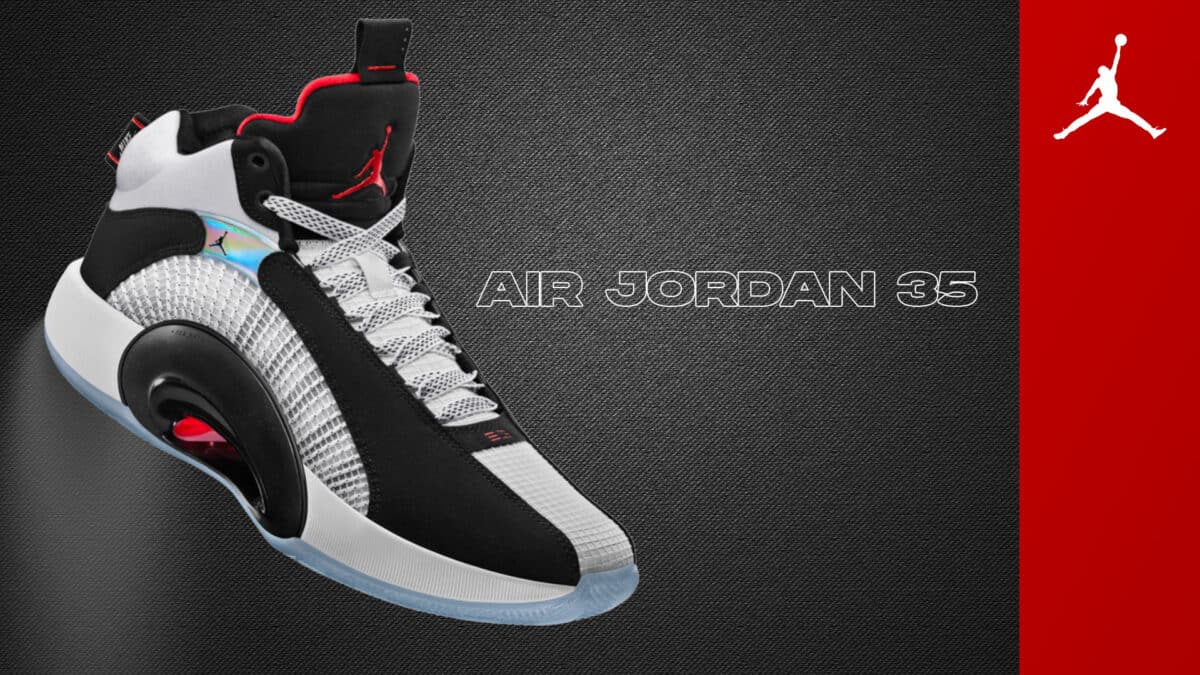
The Air Jordan line continued its legacy of excellence with the Air Jordan XXXV—a shoe that would push the boundaries of design and performance. Nike collaborated with a team of visionary designers to create a shoe that embraced a forward-thinking philosophy.
The design philosophy of the Air Jordan XXXV centred around the concept of amplifying the player’s capabilities on the court. It aimed to maximise performance through the perfect balance of support, responsiveness, and style. The result? A shoe that would help athletes unleash their full potential.
But what truly sets the Air Jordan XXXV apart is its exceptional lightness. The shoe feels like a feather on your feet, allowing you to move with agility and grace.
As we explore the NBA landscape, we find a star-studded line-up of players who proudly rock the Air Jordan XXXV on the hardwood. Zion Williamson, Luka Dončić, and Jayson Tatum showcase their skills while sporting the latest Air Jordan masterpiece.
Air Jordan 36
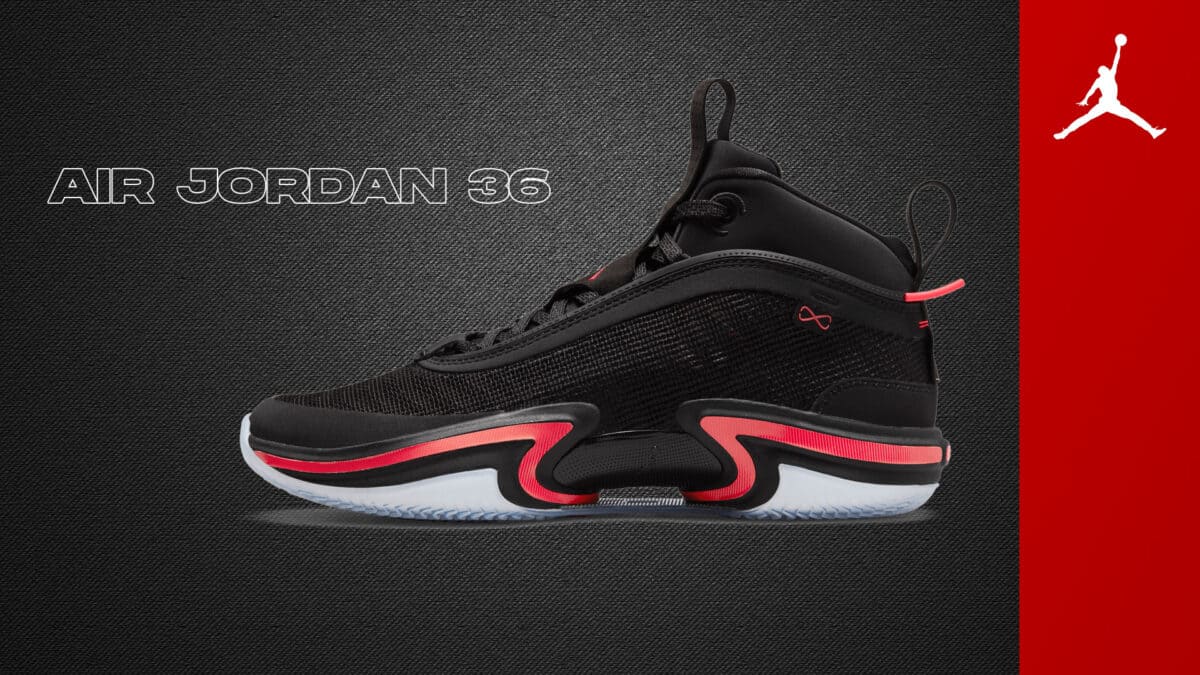
With the XXXVI, the Air Jordan legacy continues to soar. Nike again entrusted the visionary designer Tate Kuerbis with creating a shoe that would capture the essence of the Air Jordan line while incorporating modern design elements.
The Air Jordan 36 takes its design cues from the beloved Air Jordan V, a sneaker that holds a special place in the hearts of sneaker fans. Kuerbis embraced the iconic features of the Air Jordan 5 and reimagined them for a new generation of enthusiasts.
The shoe made its exciting on-court debut during the 2021 NBA Playoffs, on the feet of rising superstar and Jordan’s new kid on the block, Jayson Tatum of the Boston Celtics. Hoop fans will remember that as the series, Boston shut Kevin Durant’s Brooklyn Nets and swept them to move on to the next round. Ouch.
The design philosophy of the Air Jordan XXXVI revolves around the perfect blend of comfort, support, and agility. It features state-of-the-art cushioning technology, responsive materials, and an innovative fit system that moulds to the foot for a personalised feel. The goal is to provide athletes with the ultimate performance-enhancing experience, allowing them to dominate the court confidently.
The Air Jordan XXXVI is about a modern aesthetic, combining premium materials with intricate detailing. It’s a shoe that delivers on performance and turns heads with its eye-catching design. From the iconic Jumpman logo to the intricate patterns and textures, every element is meticulously crafted to capture attention and elevate your style.
Air Jordan 37

Released in late 2022 and initially leaked on Twitter, the Air Jordan XXXVII paid homage to the Air Jordan VII. This unique shoe took inspiration from West African tribal art and has stood the test of time as an all-time favourite from the Jordan Line. For the XXXVII, the Jordan Brand design team partnered with renowned Swiss artist and photographer Fabian Oefner to create images that would accompany the shoe’s release.
Oefner’s artistic approach revolves around exploring the boundaries of reality and imagination. His work often captures moments frozen in time, revealing hidden beauty and evoking a sense of wonder. With his exceptional talent and creative vision, Oefner has left an indelible mark on the art world.
It was only fitting, then, that he was the right man to lend his creative touch to a shoe inspired by the intangible beauty of the supernatural. The collaboration resulted in a harmonious fusion of art, design, and sneaker technology.
Speaking of sneaker tech, we can’t end a piece about the Air Jordan XXXVII without making mention of the new Formula 23 tech, which adds to the Jordan line’s focus on flight by paying attention to the landing. According to Chad Troyer, senior product line manager of the Air Jordan XXXVII, “By giving athletes more confidence in landing, they will jump with additional force”. Which basketball fan wouldn’t want to see that?
Air Jordan 38
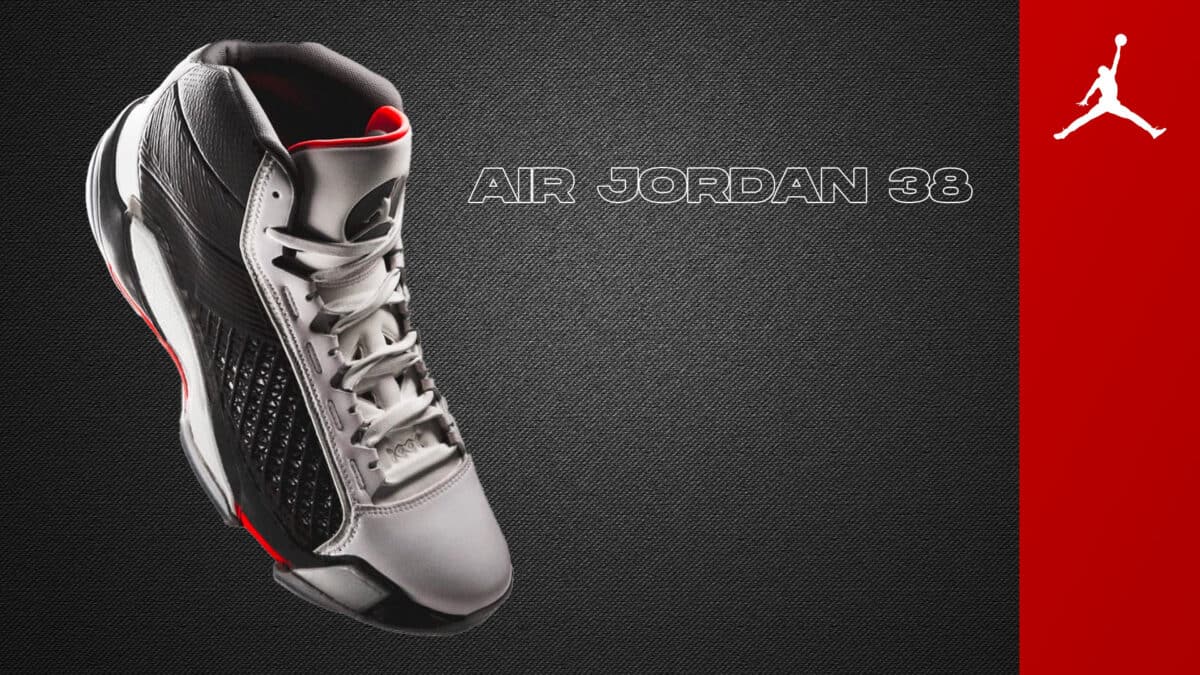
In the world of sneakers, staying relevant is a challenging feat. However, in 2023, the Air Jordan line continues to prove its enduring popularity, and the Air Jordan 38 will be the latest testament to its timeless appeal. The Air Jordan 38 takes us back to the unforgettable 1993 Chicago Bulls championship series when Michael Jordan and his team dominated the court, with him averaging almost 41 points, eight rebounds, and six assists on a 50 per cent field goal percentage. The embroidered upper features specific areas highlighting those statistics – 41 crosshatches on the collar represent Jordan’s 41-points-per-game average; three diamonds on the medial side symbolise the Chicago franchise’s third consecutive championship.
It’s a nod to the Air Jordan 8, a sneaker with a special place in our hearts and basketball history. The Air Jordan 38 encapsulates the essence of that iconic moment, celebrating the Bulls’ victory with style and flair.
The Air Jordan 38 captures our attention and ignites our passion for sneaker culture. It combines the best contemporary design and timeless appeal, striking the perfect balance between nostalgia and innovation.
RELATED: Air Jordan 38 Colourways – Everything You Need To Know


